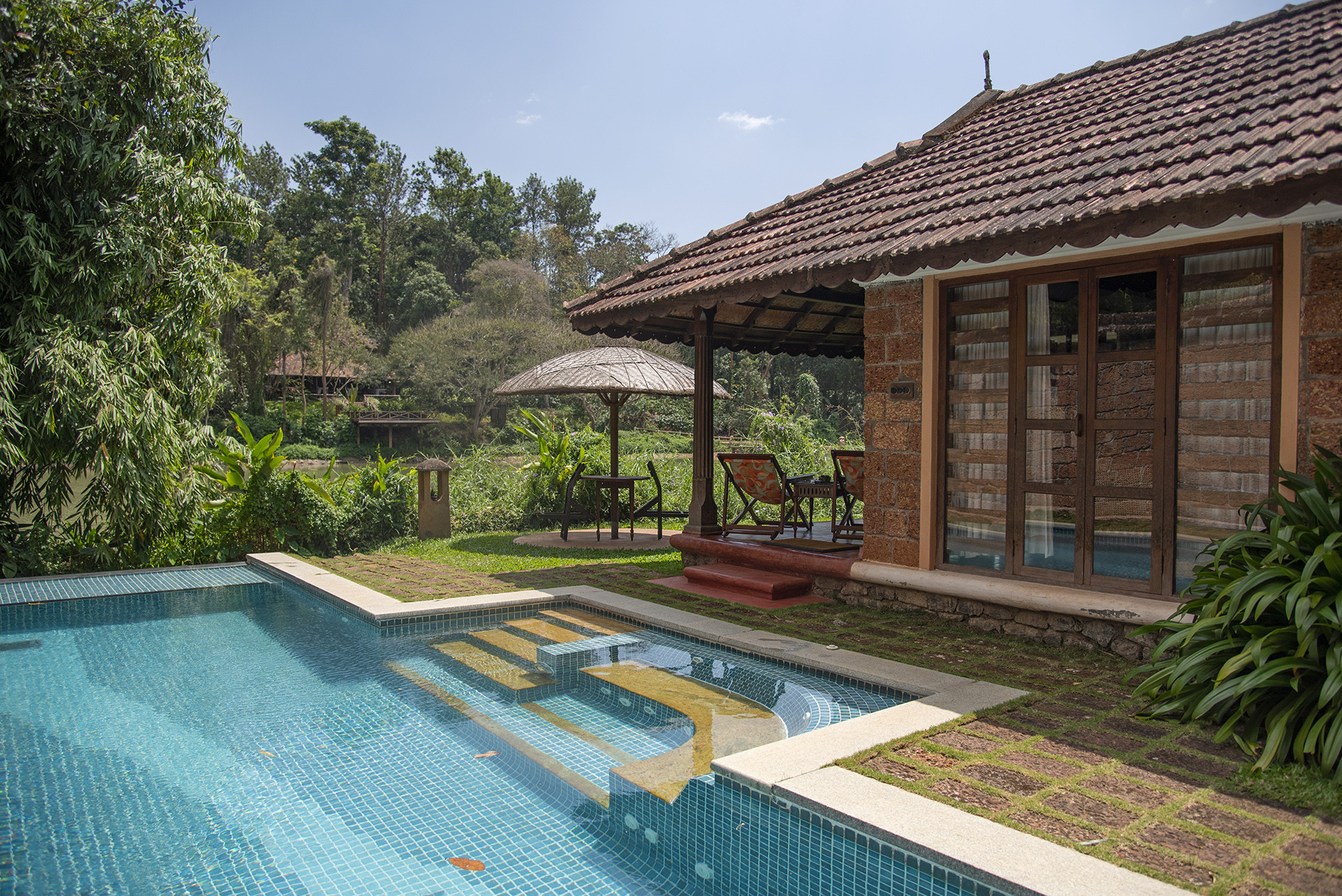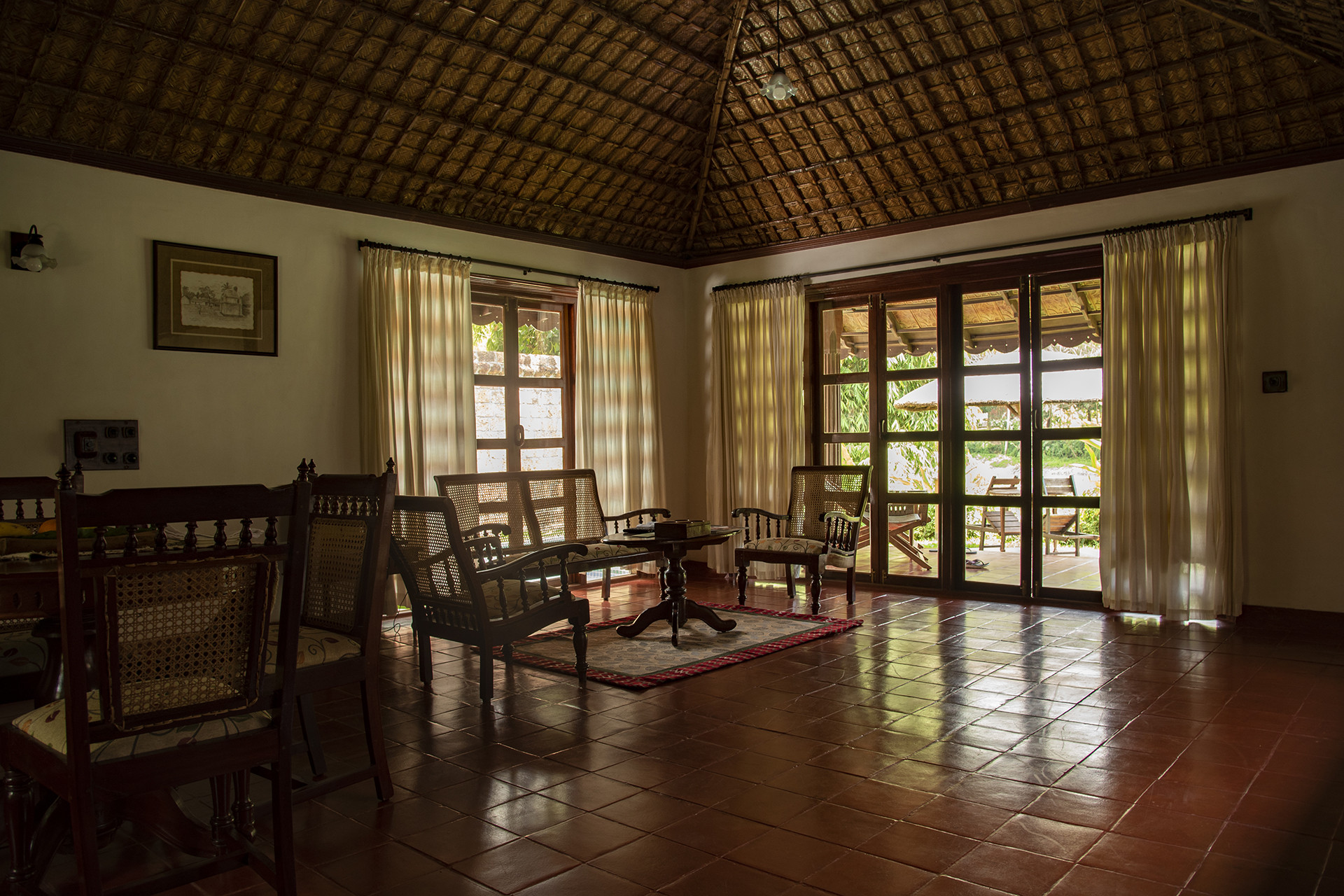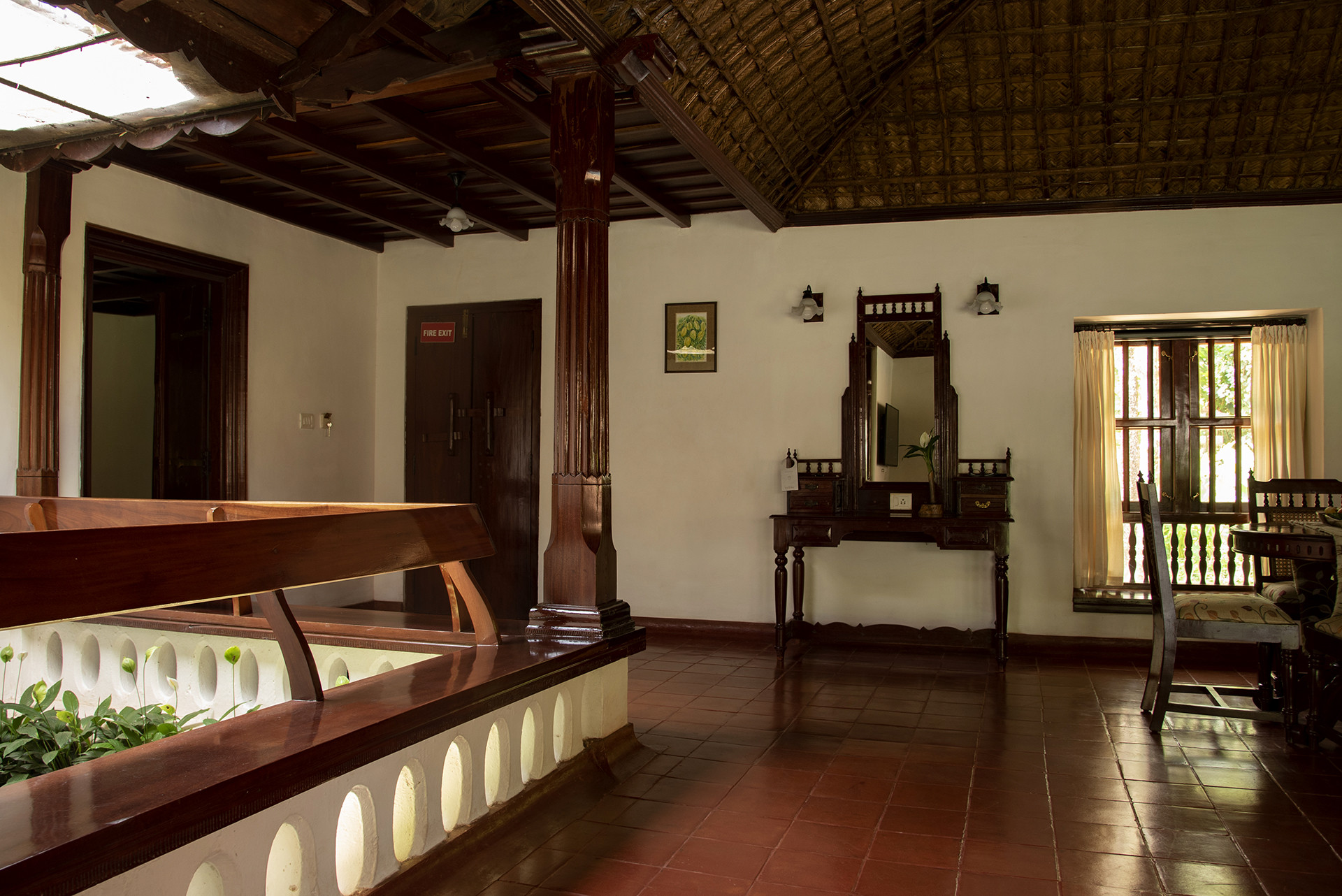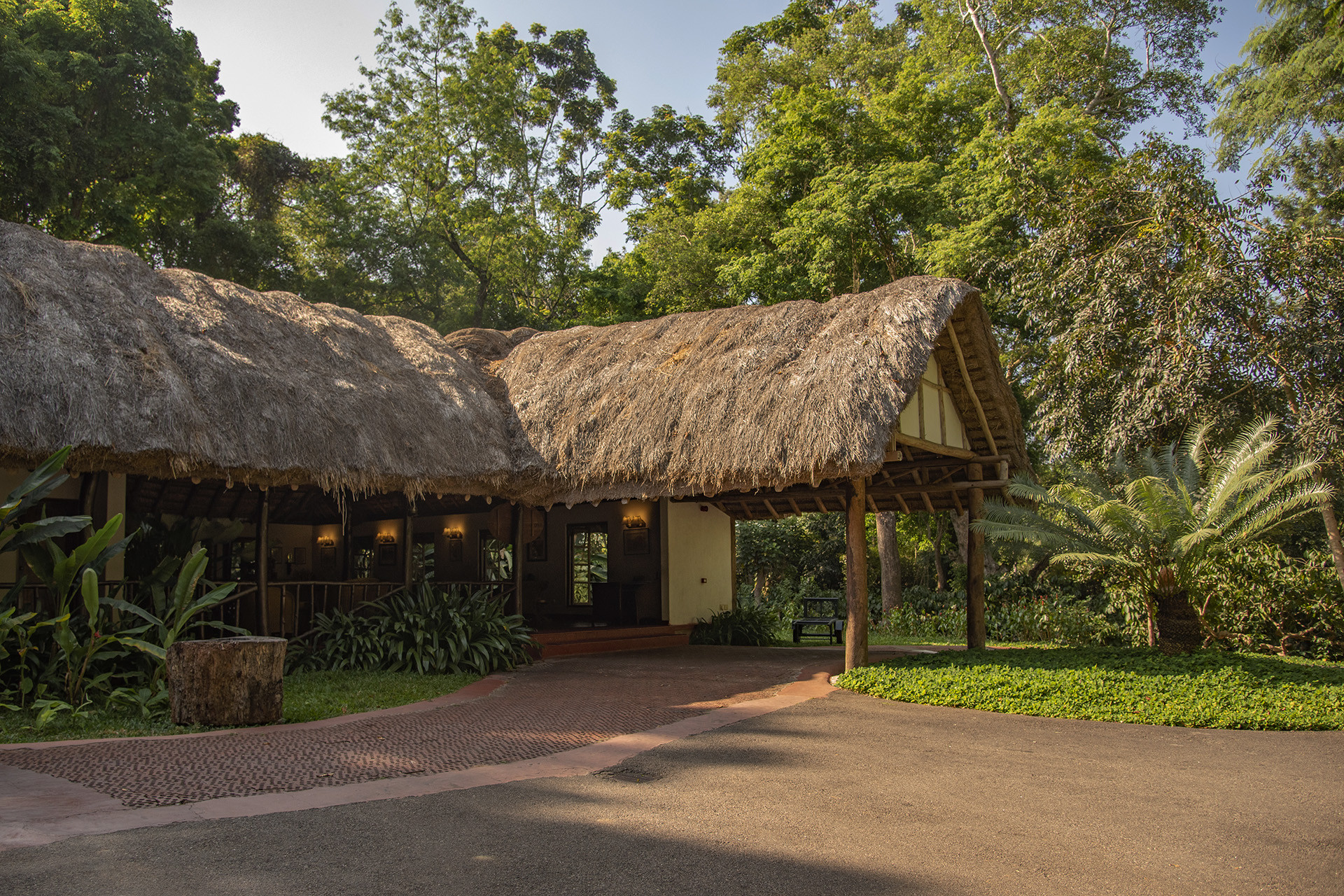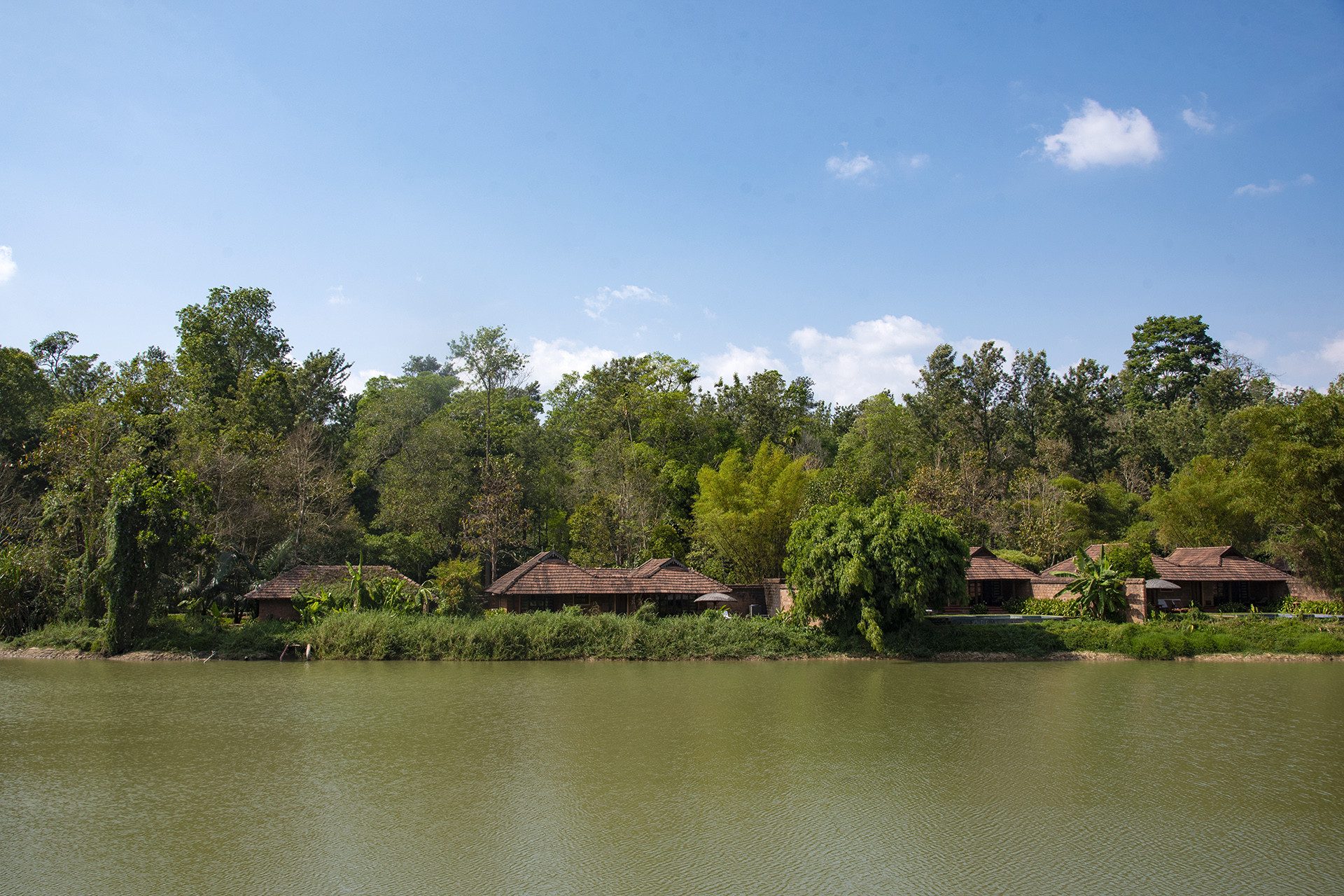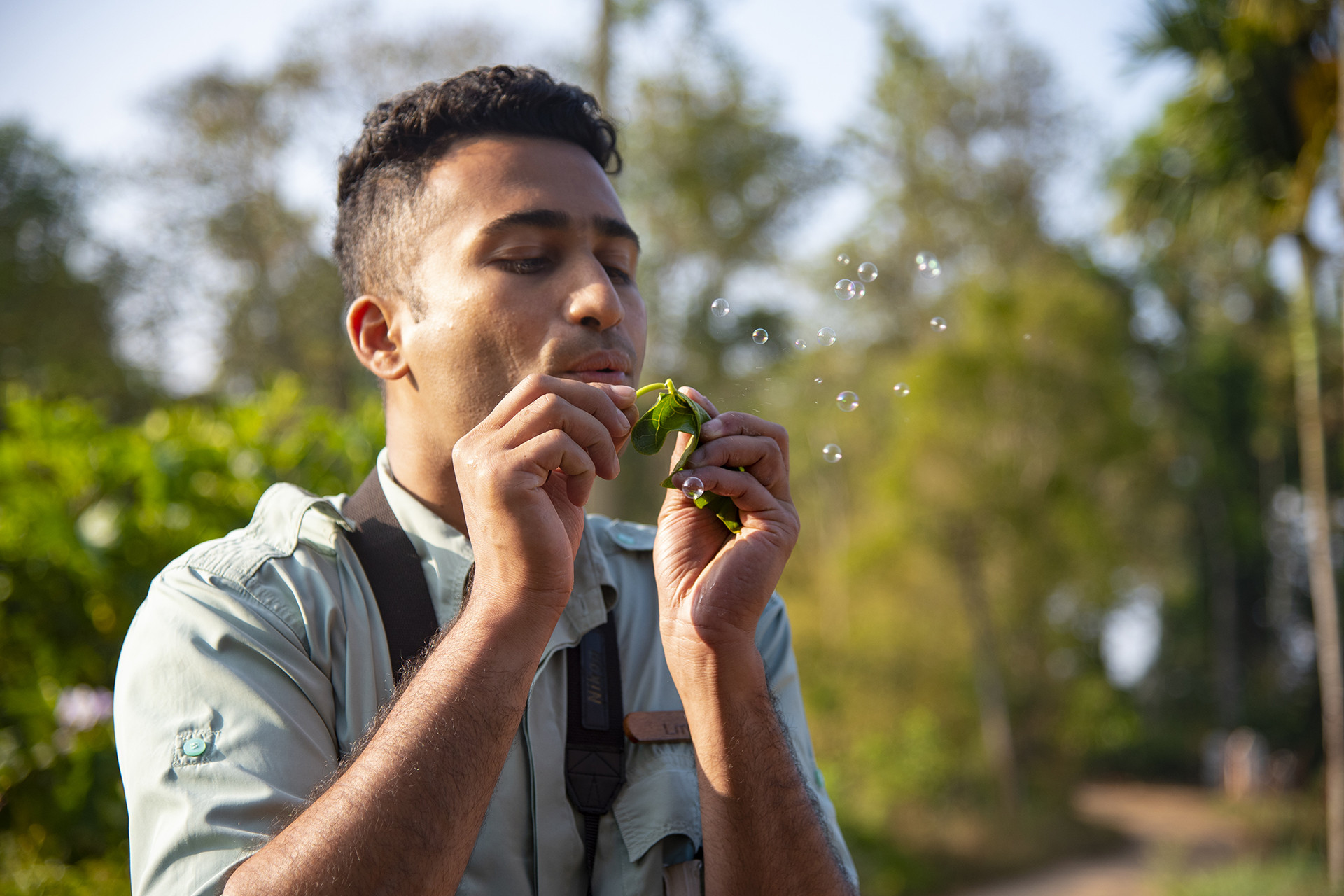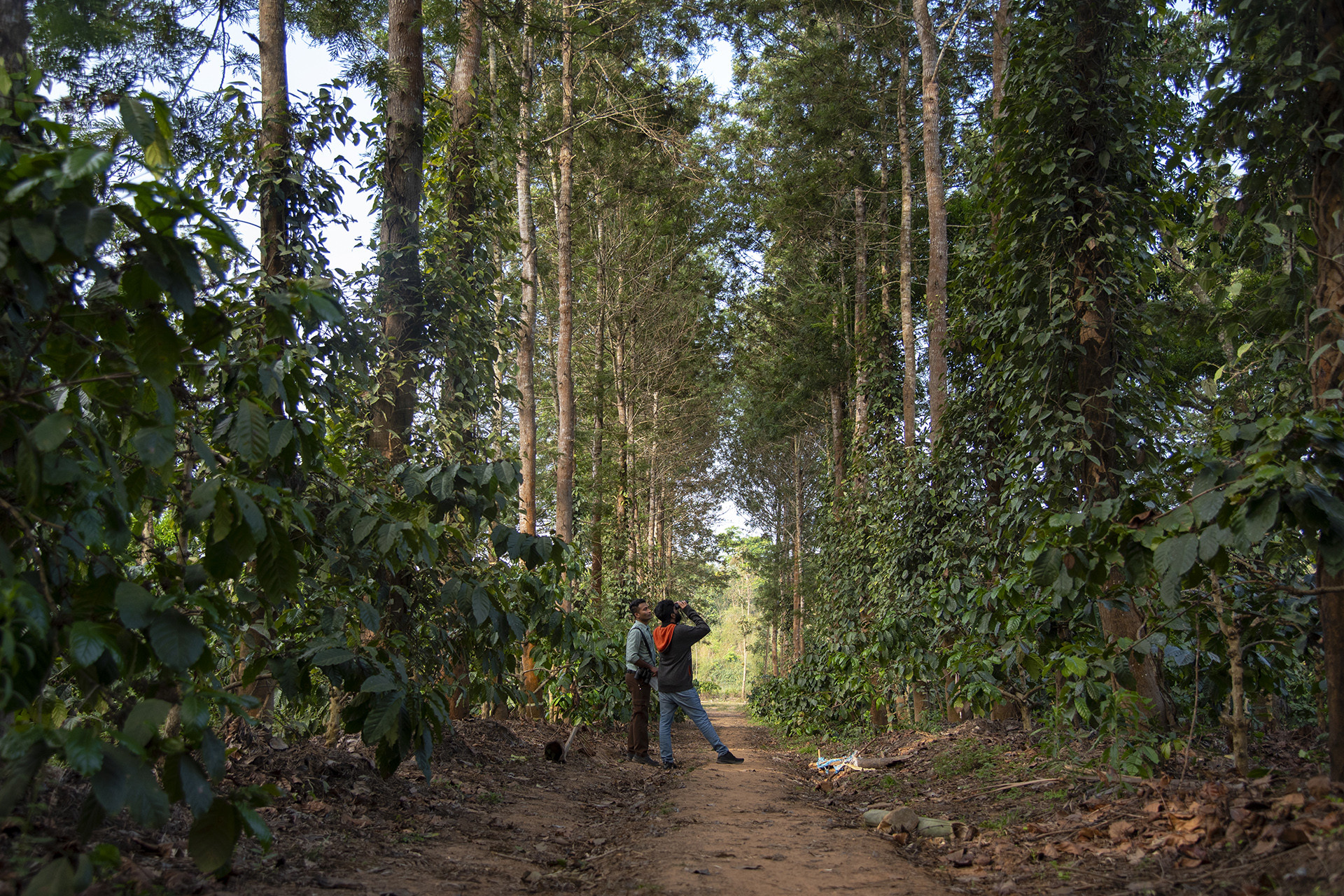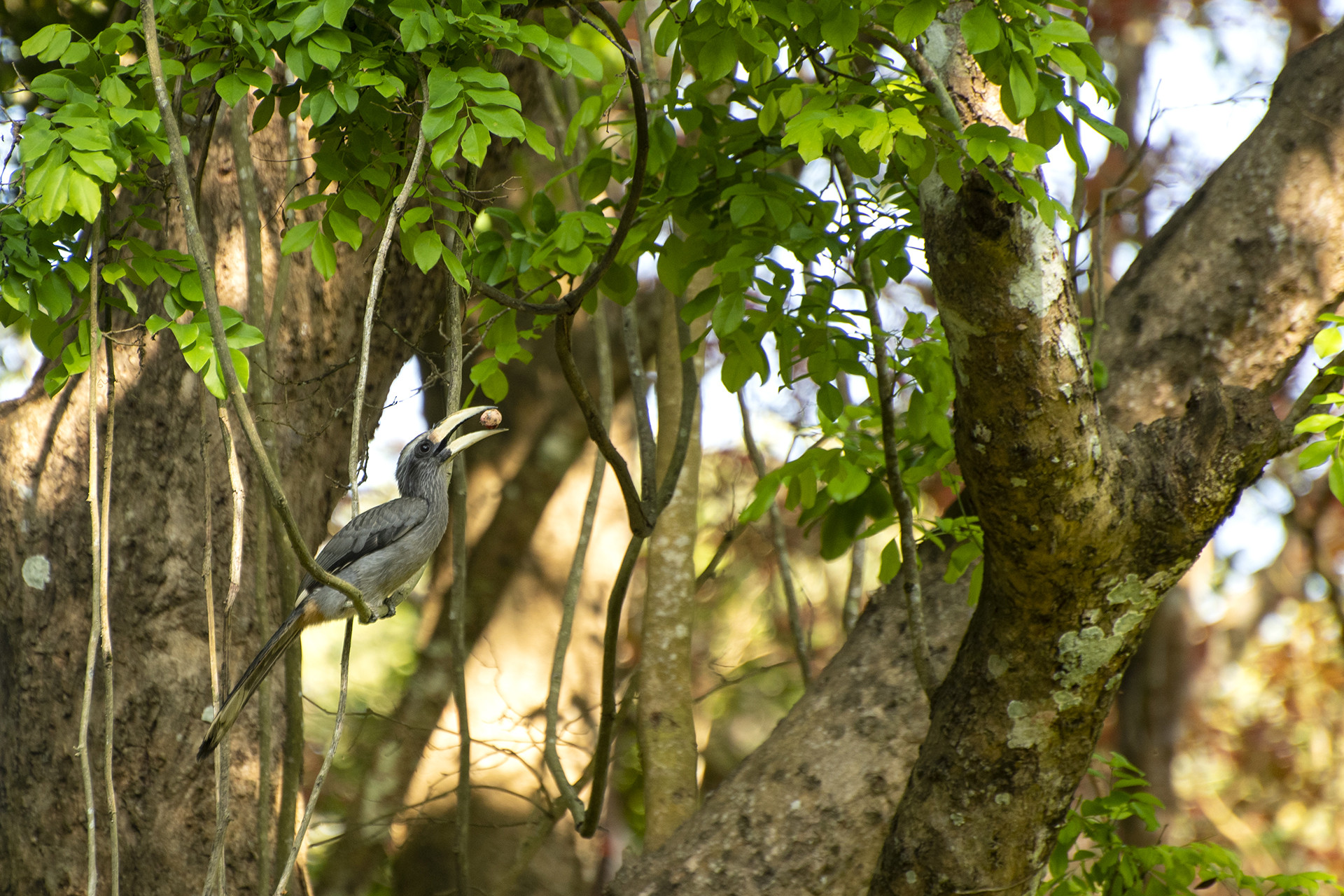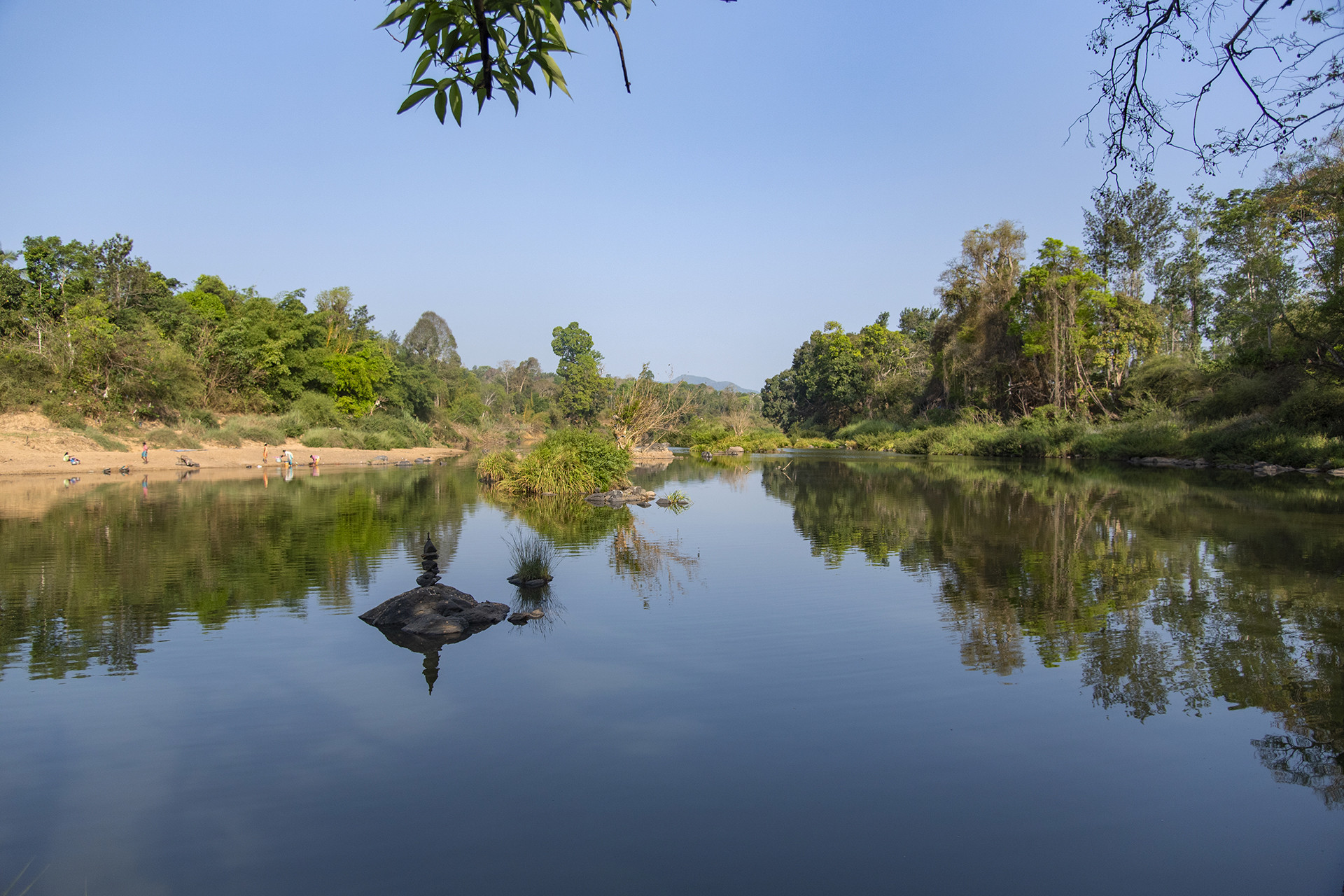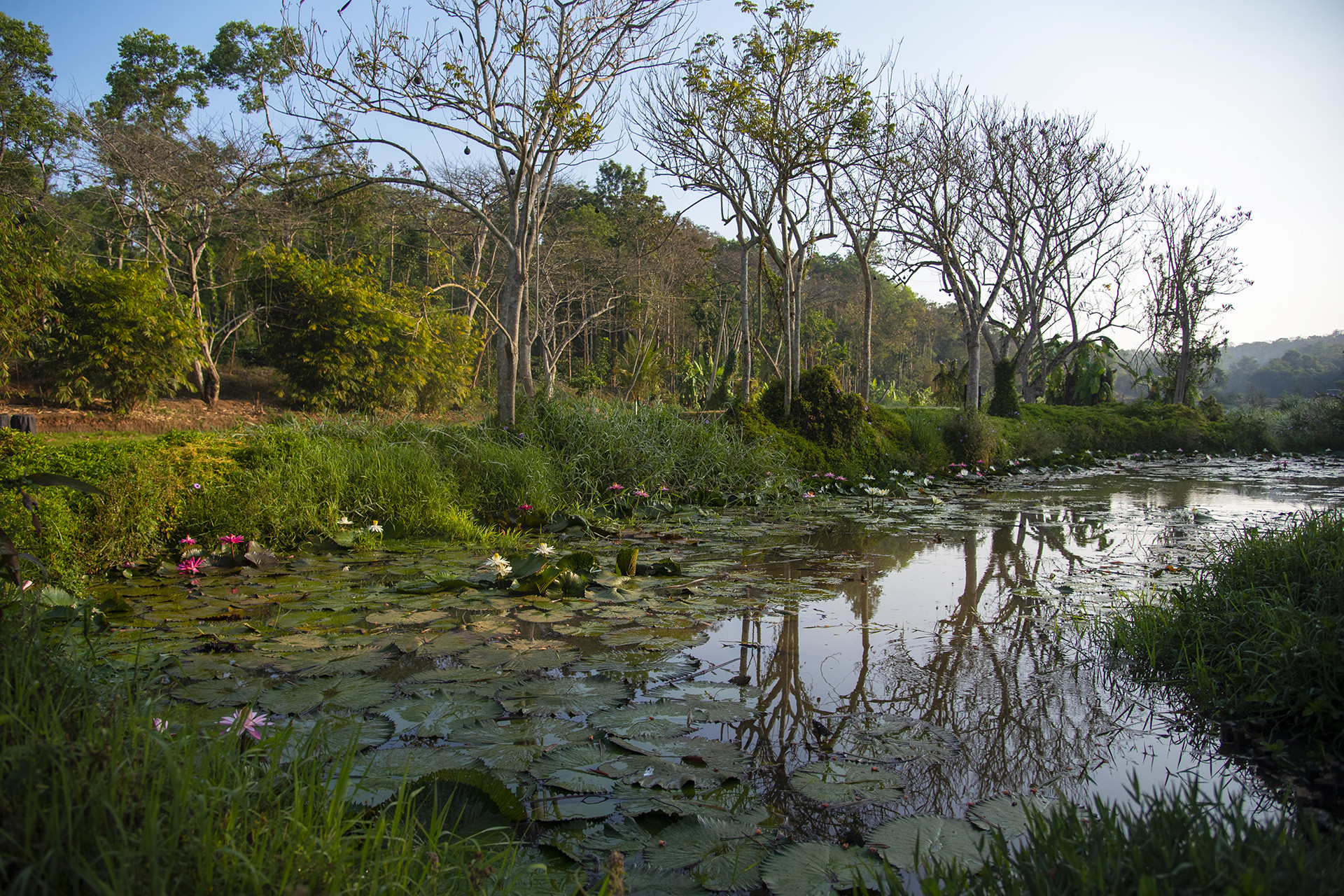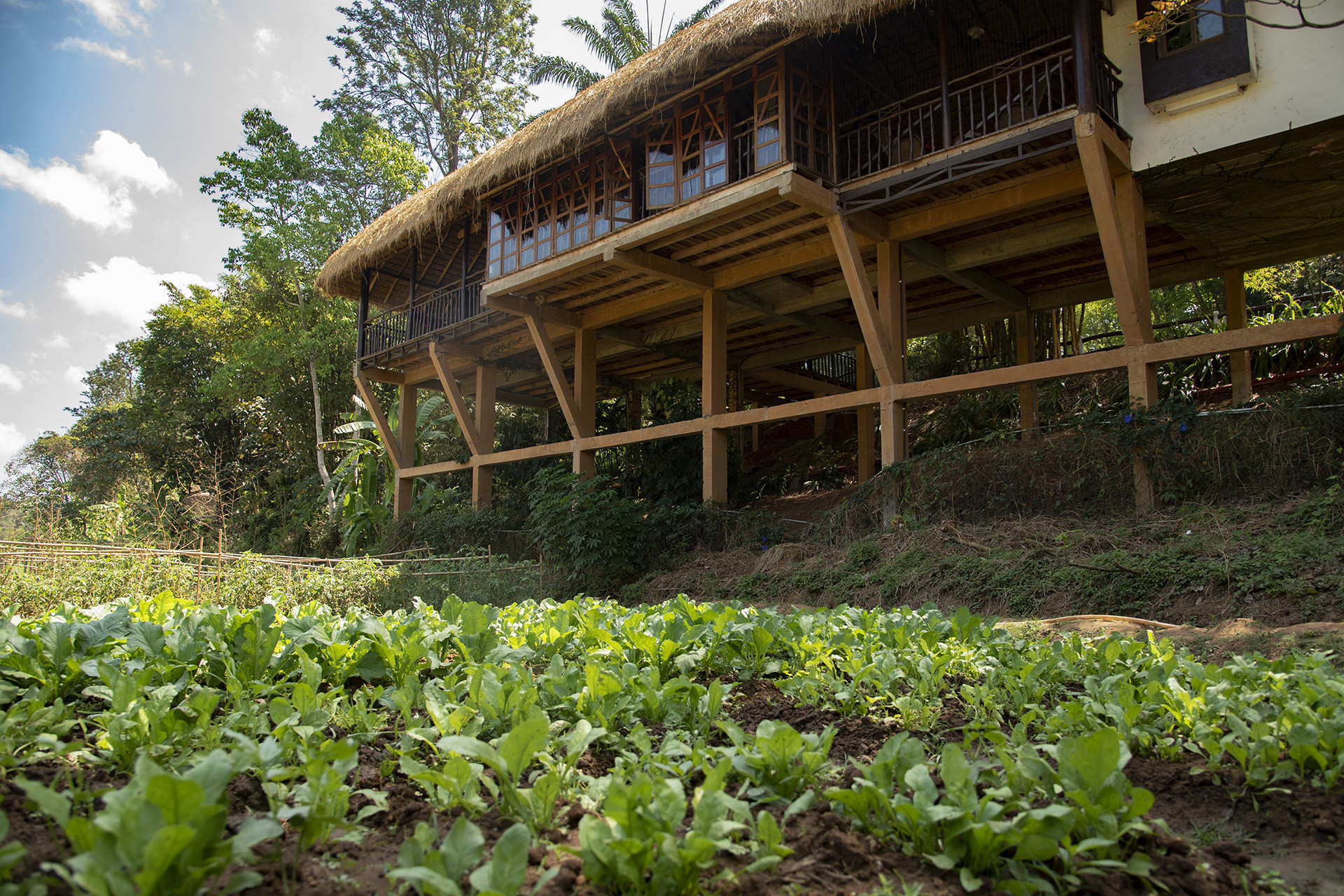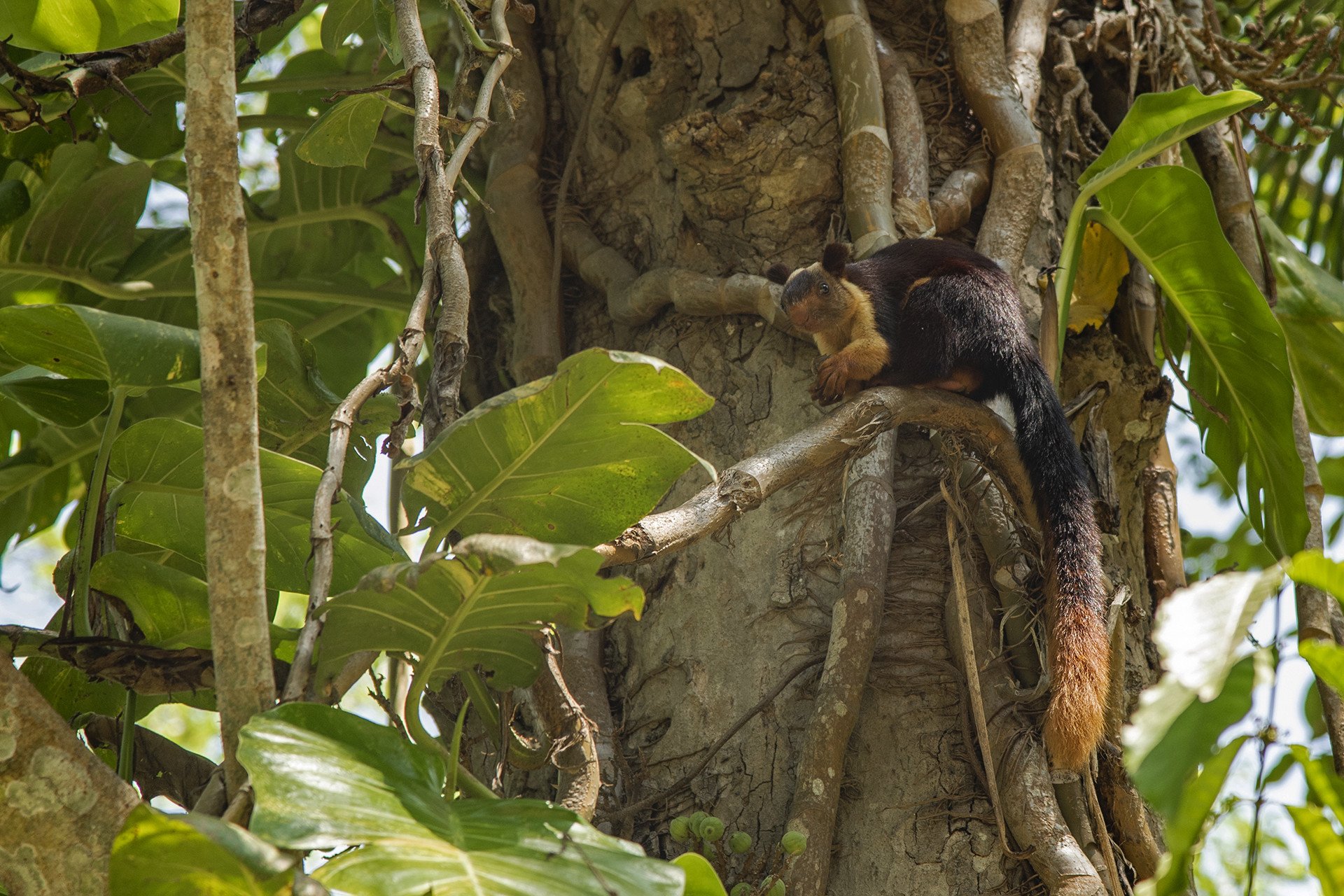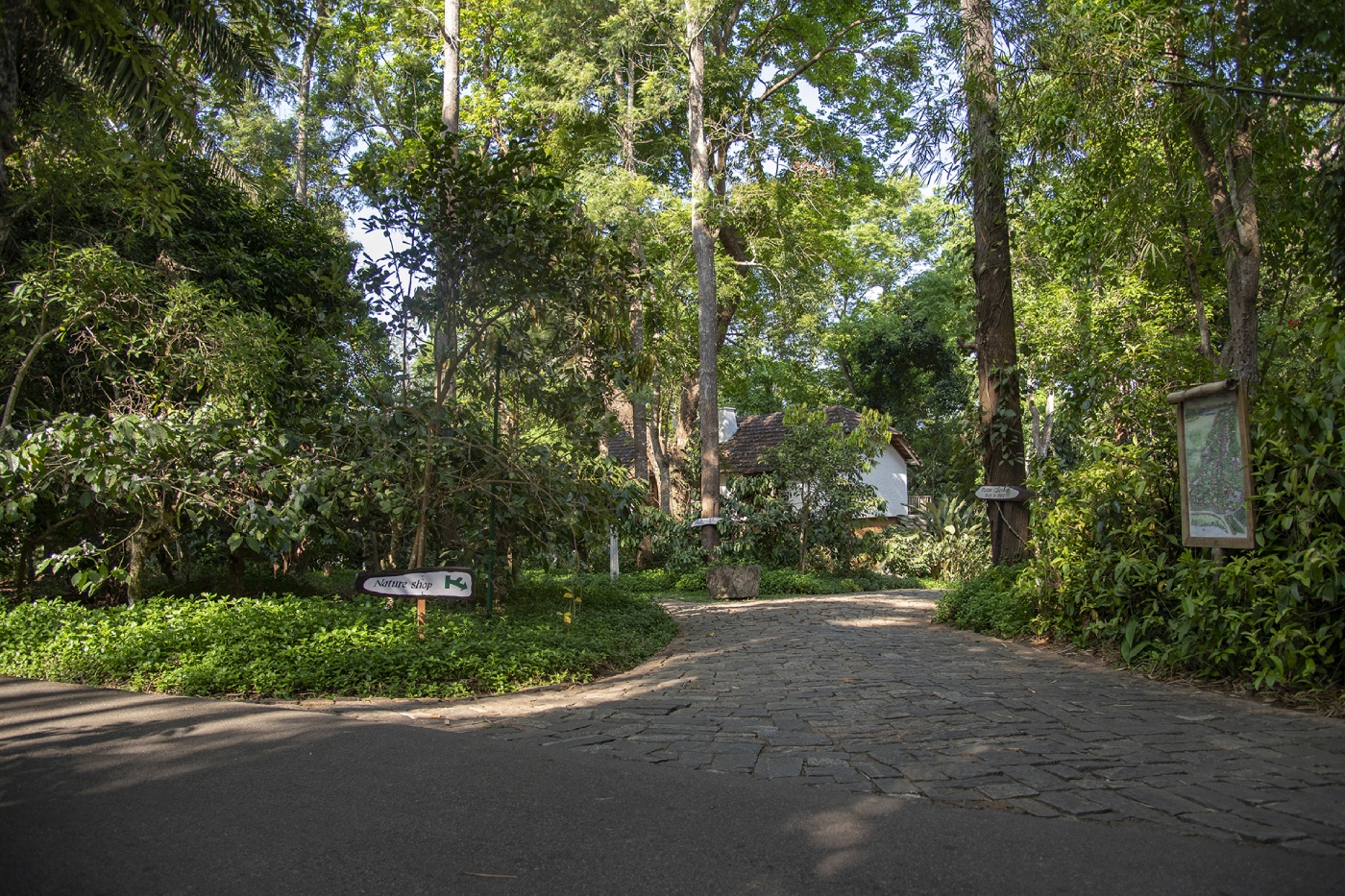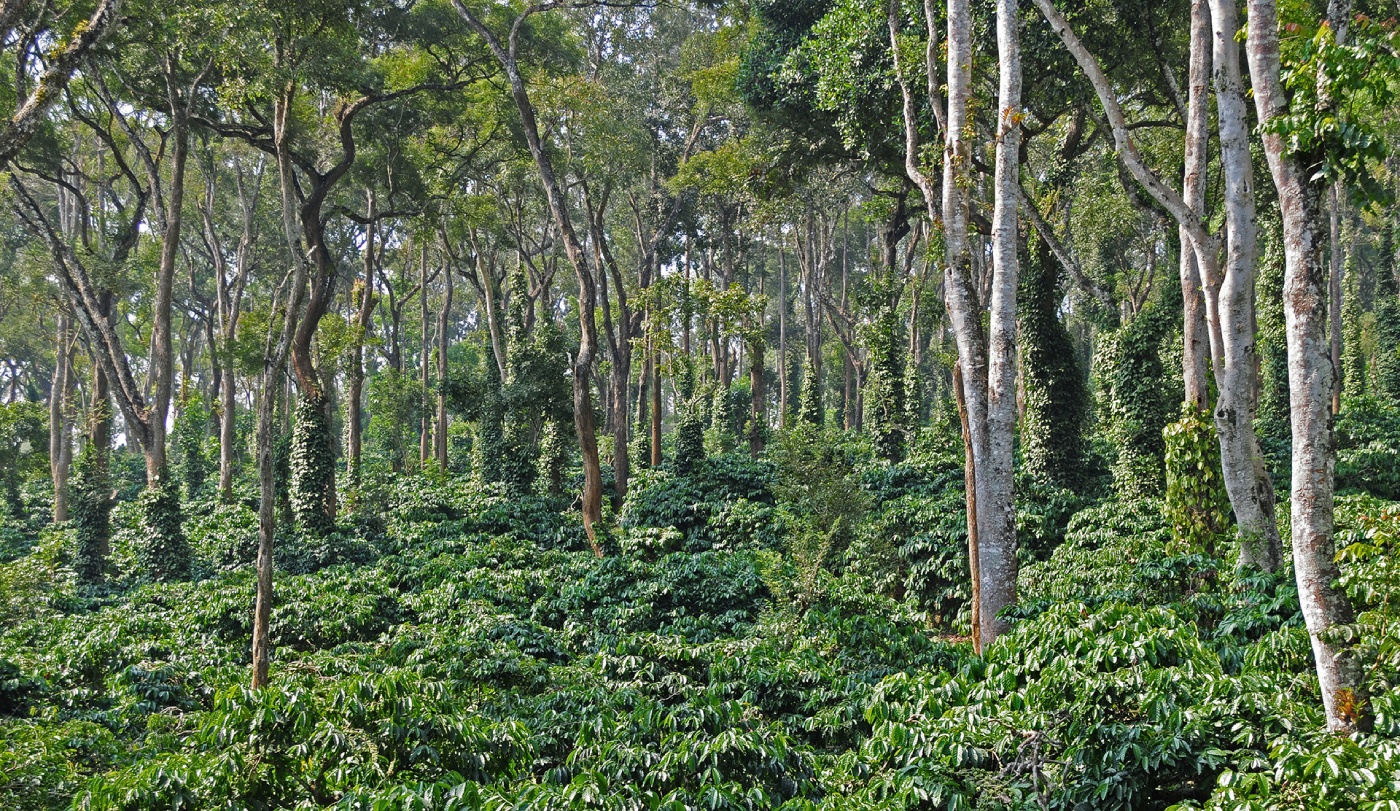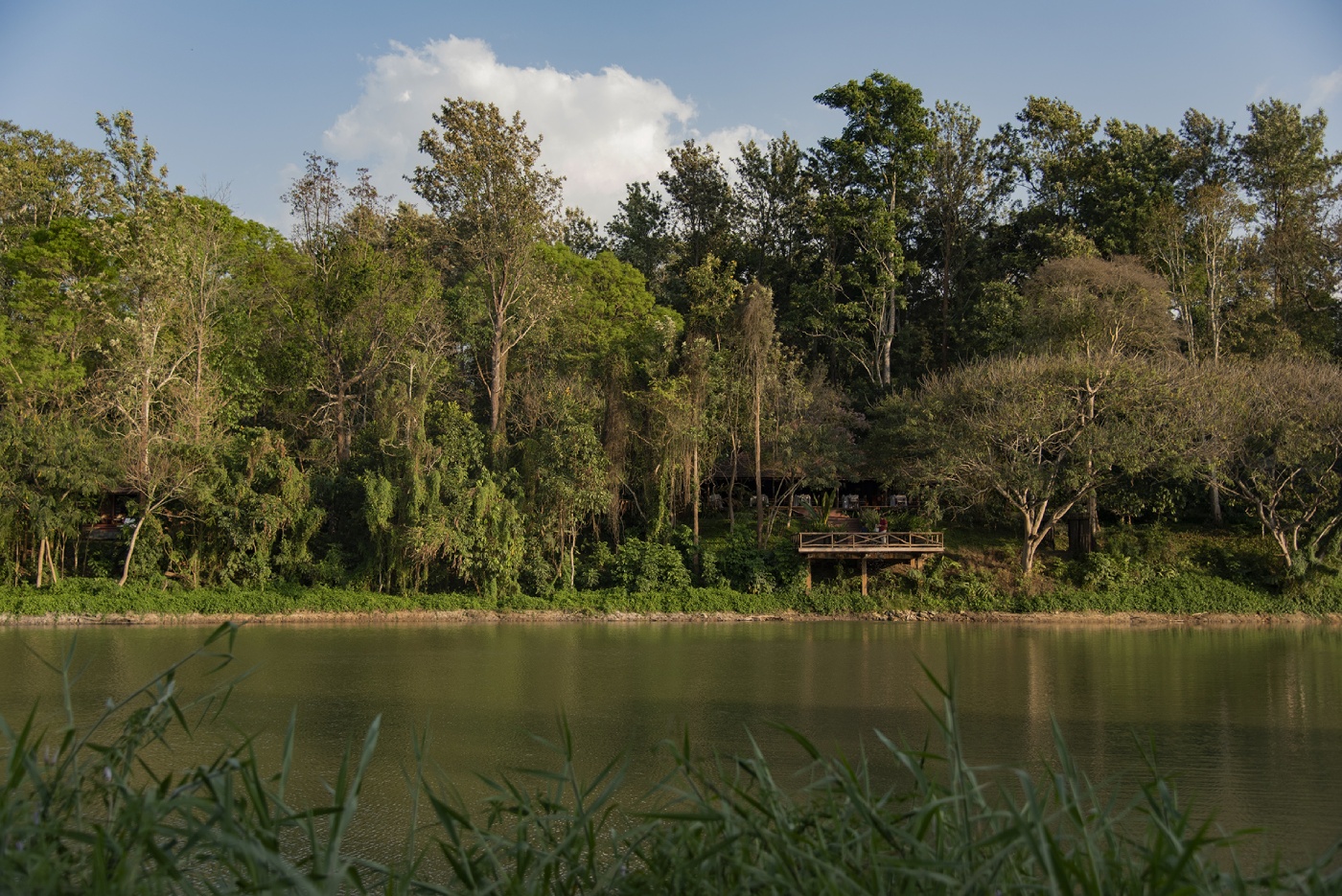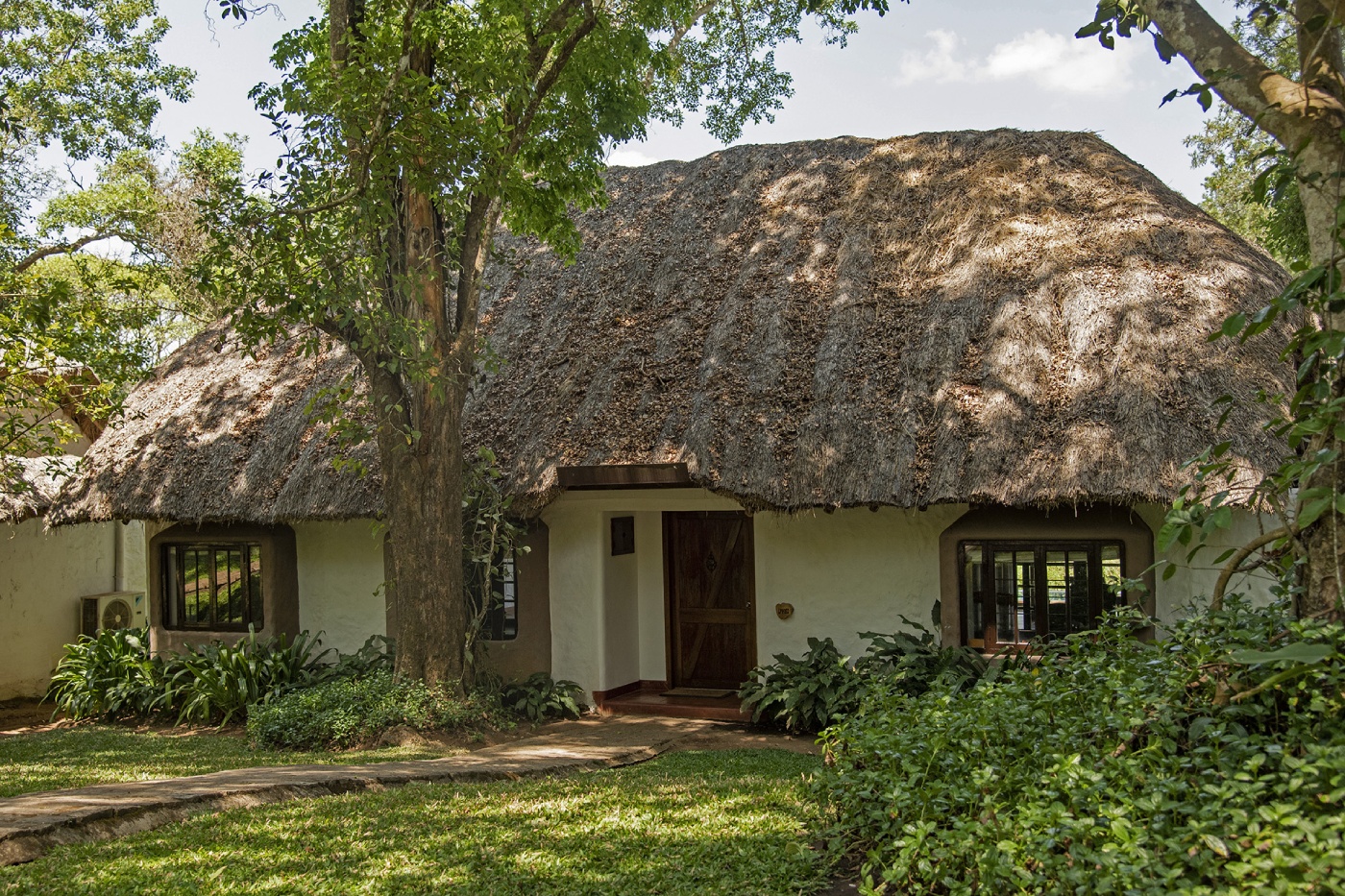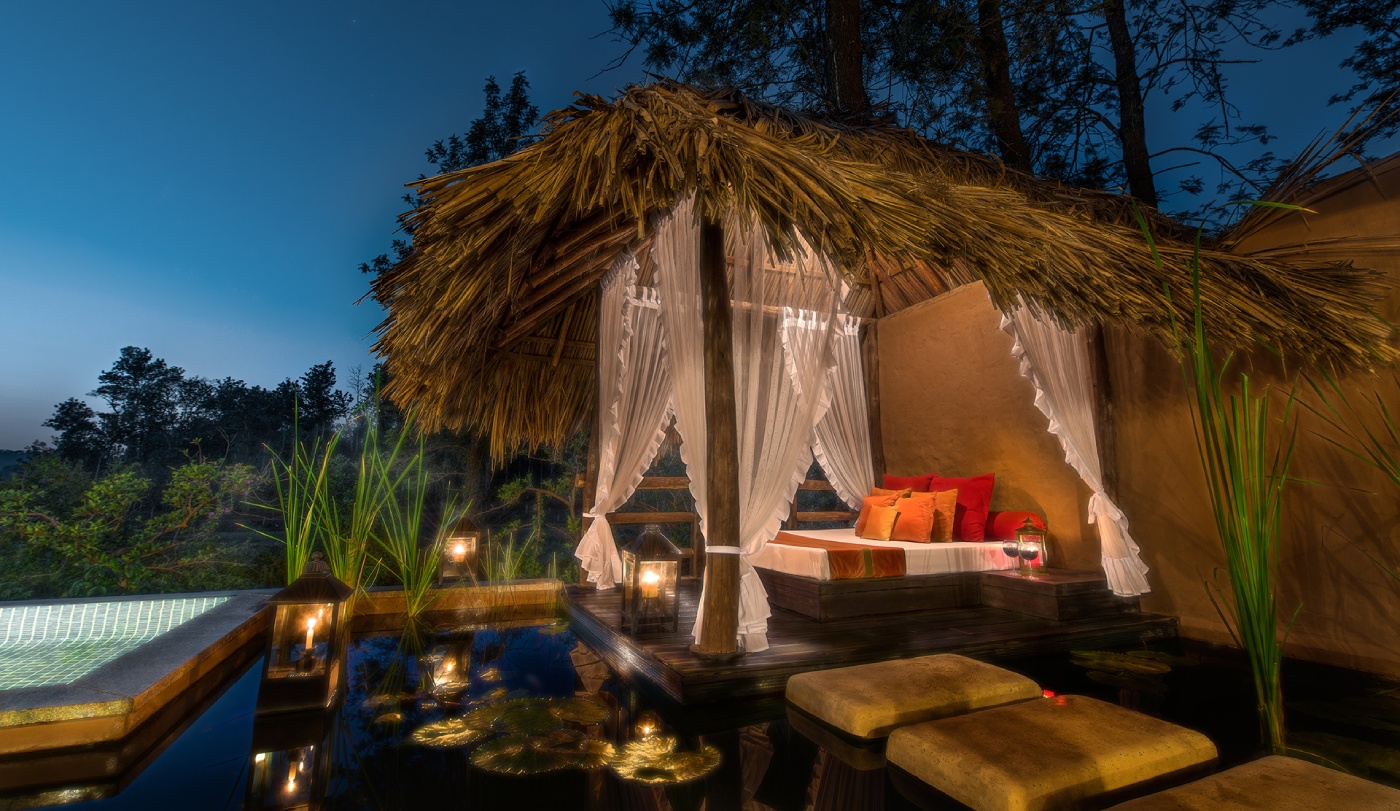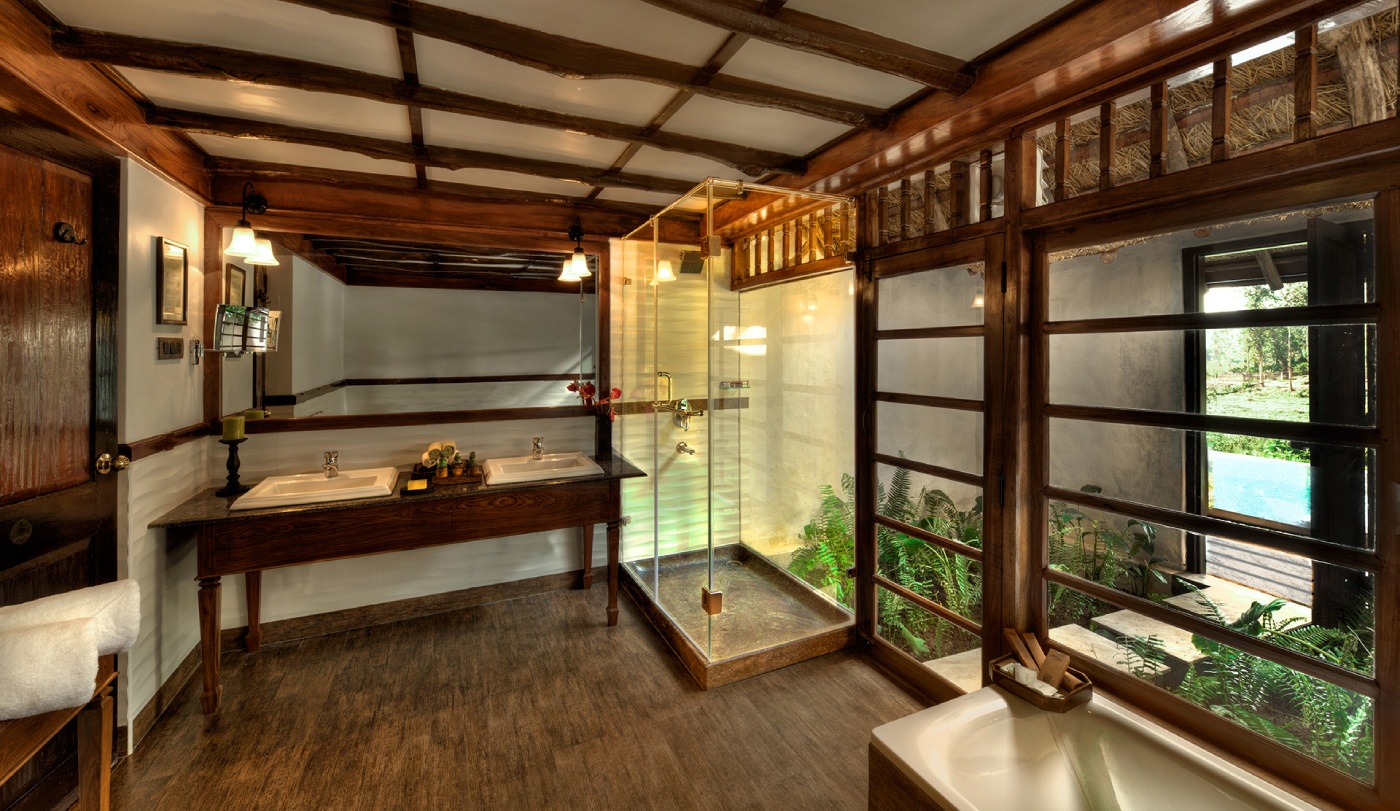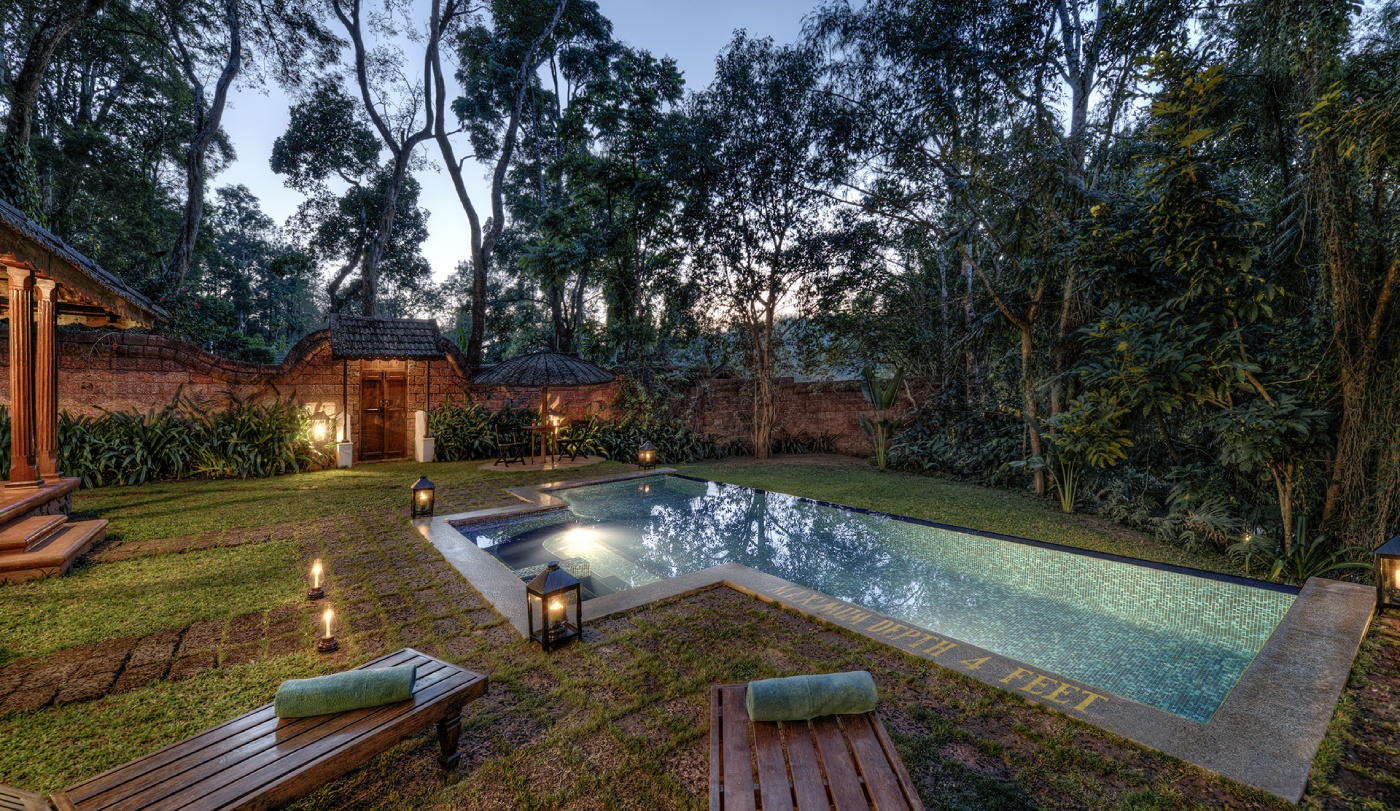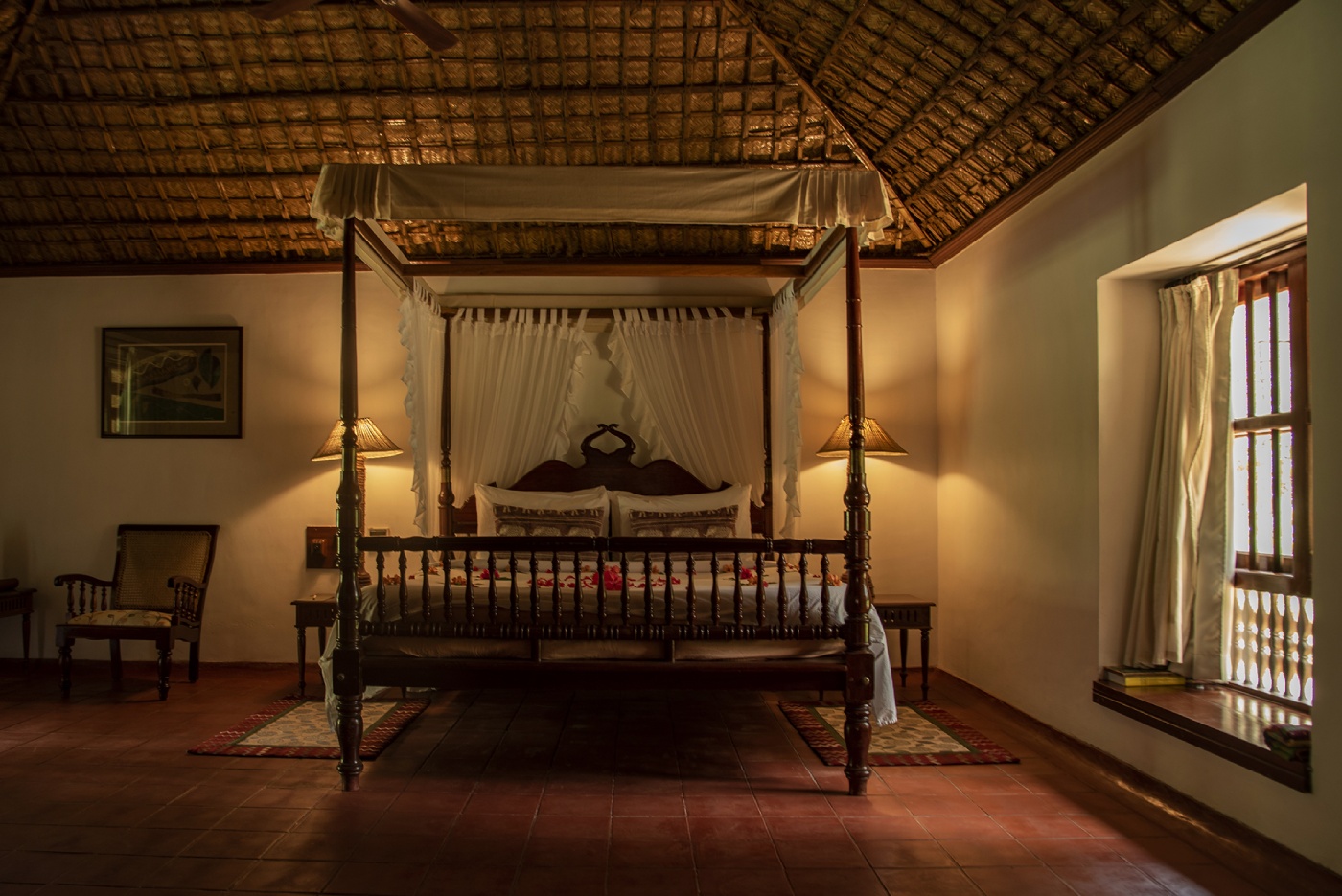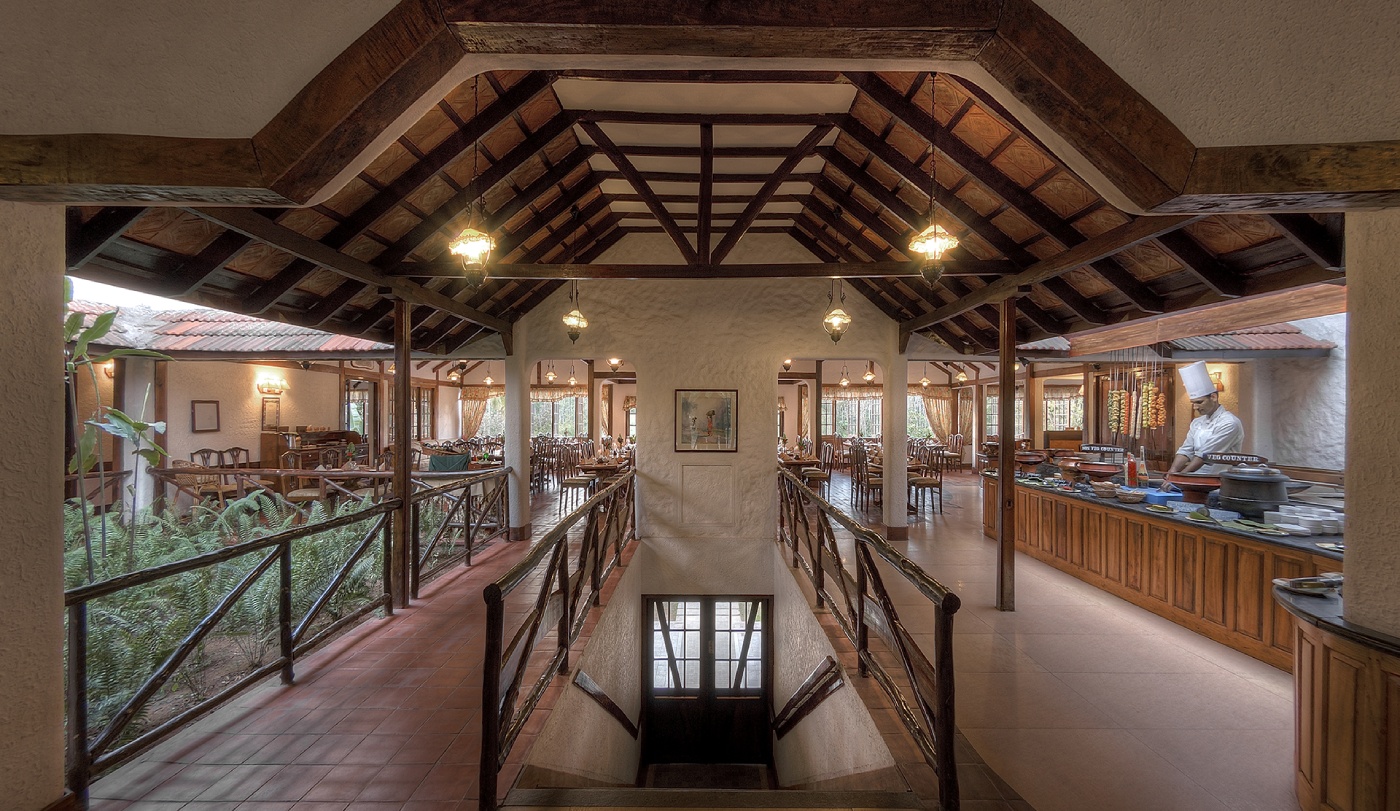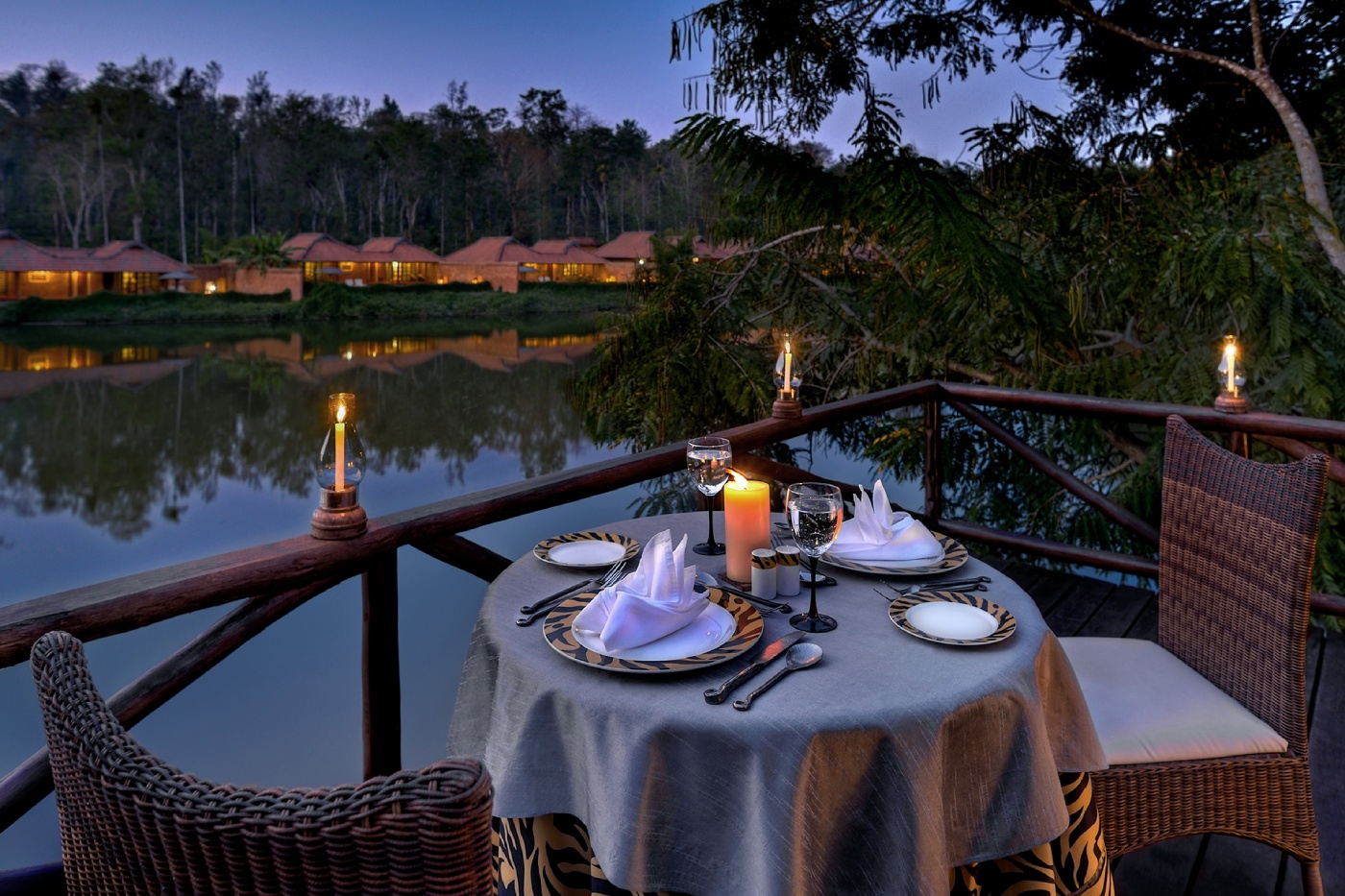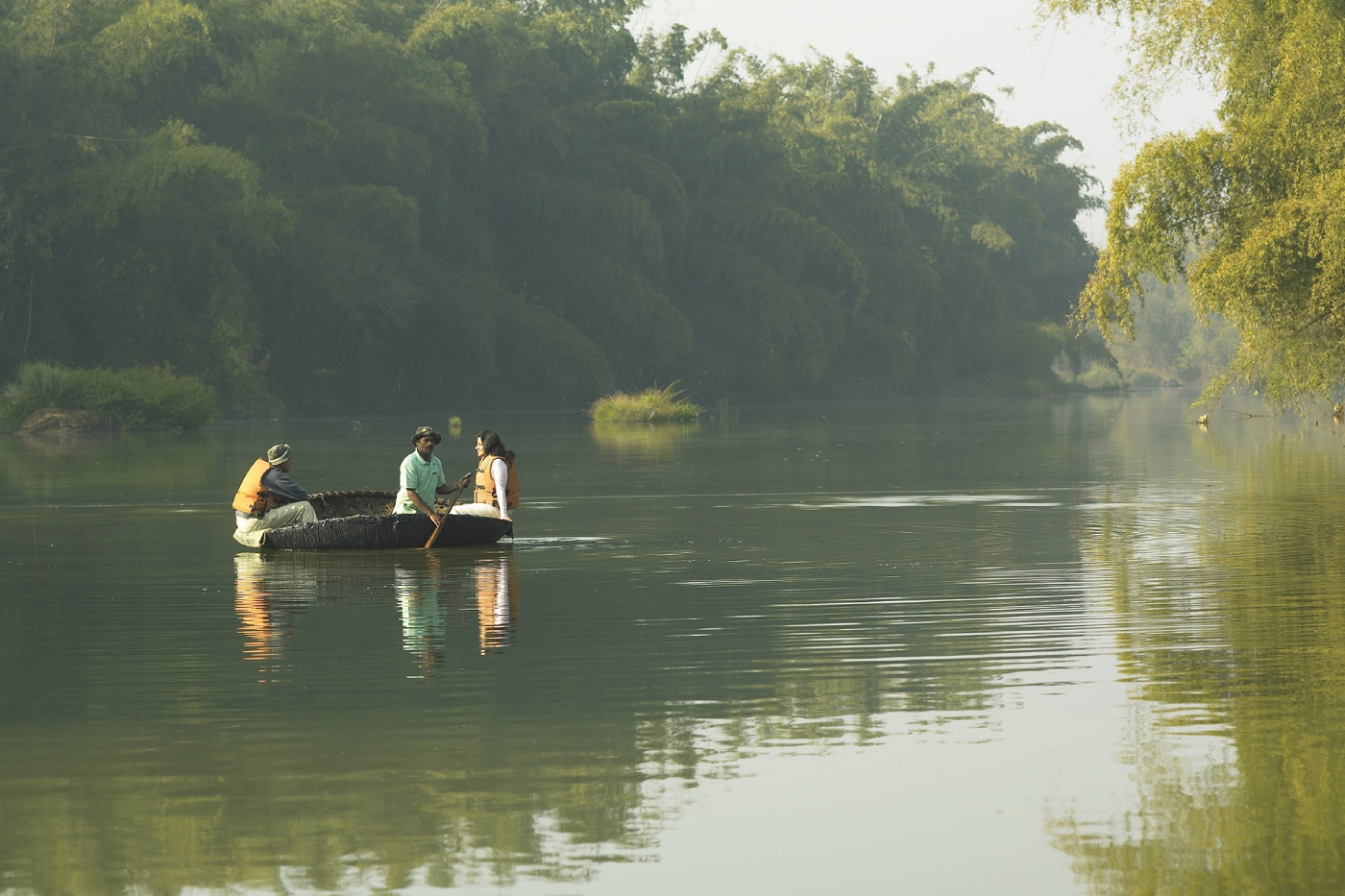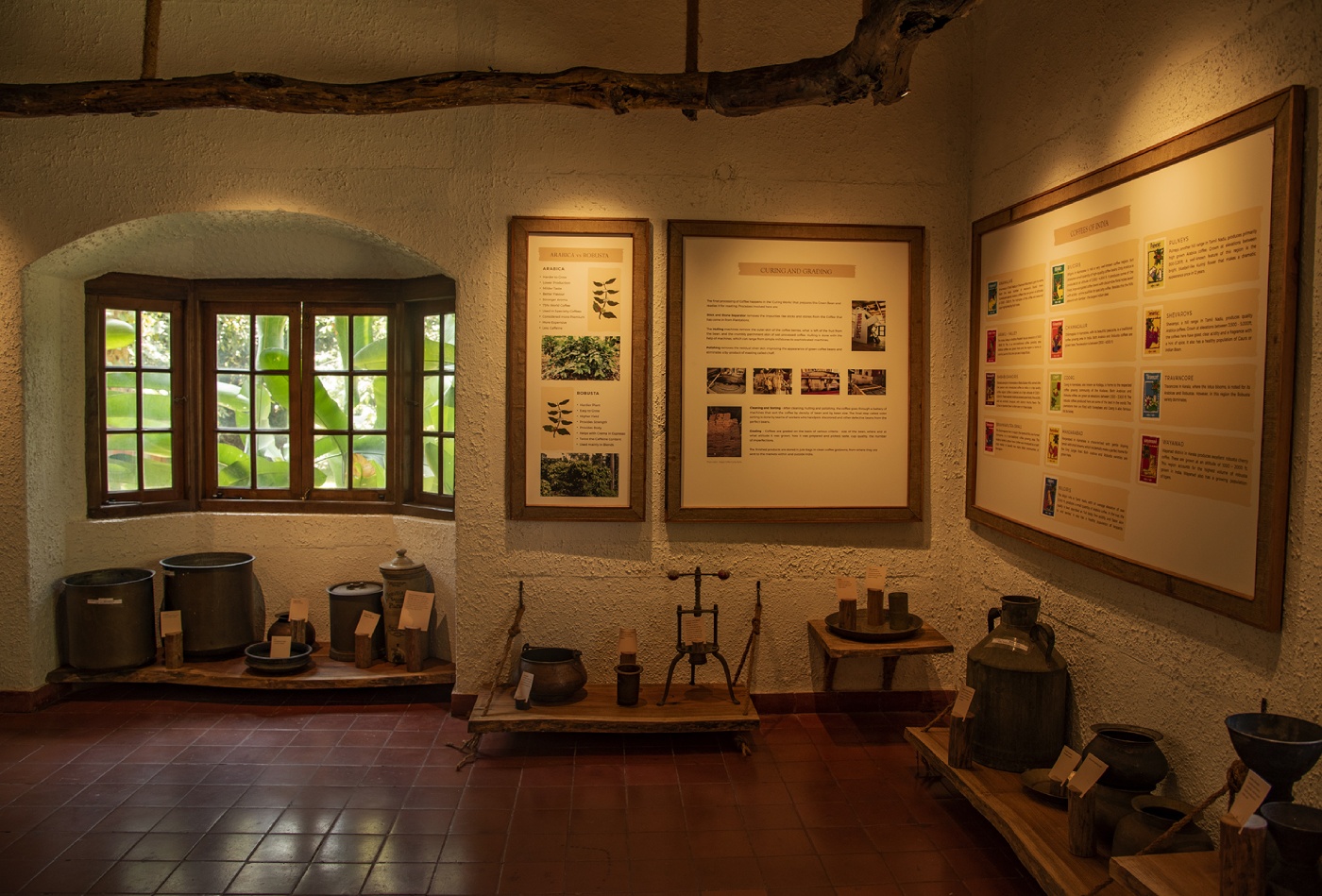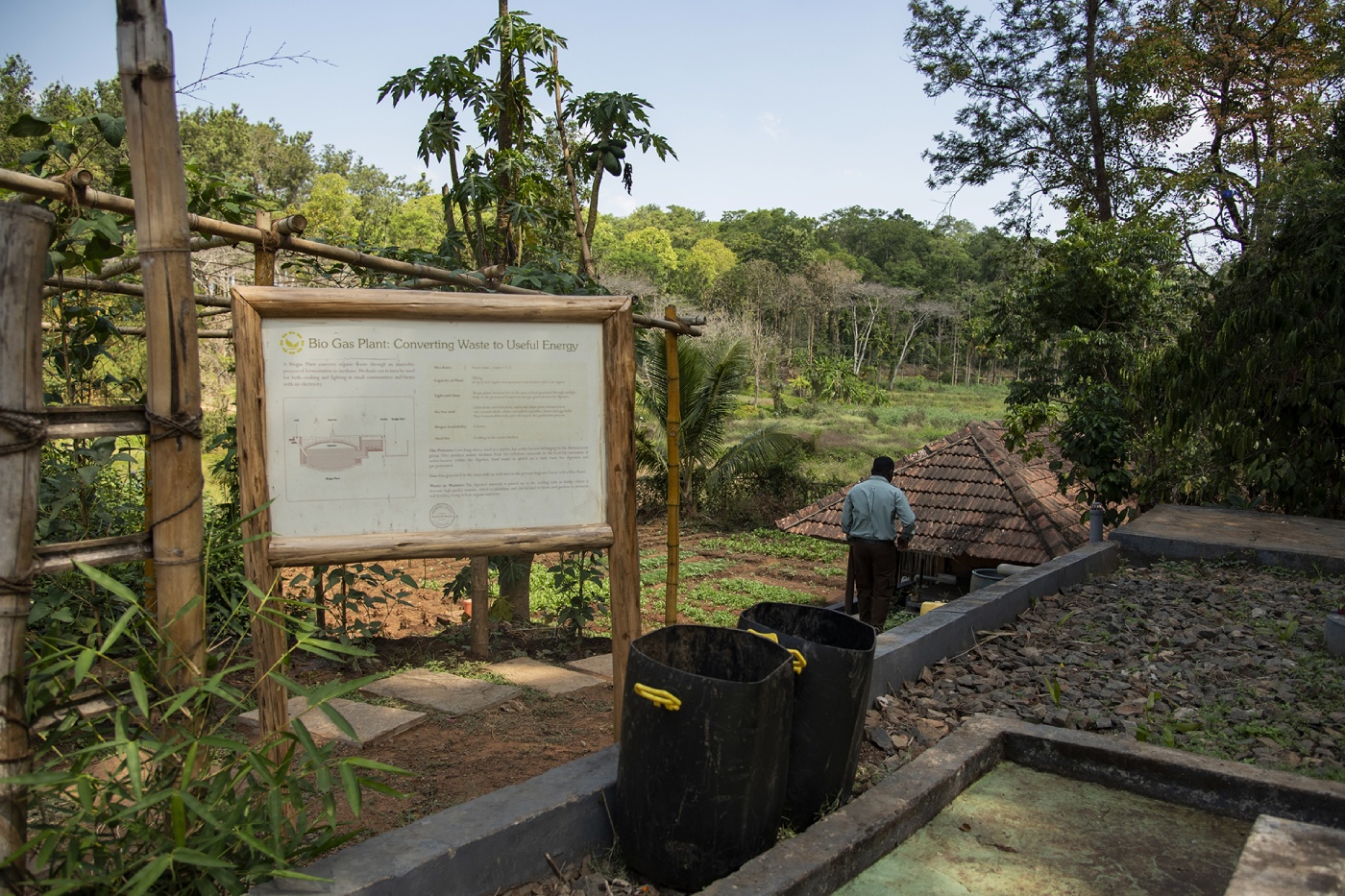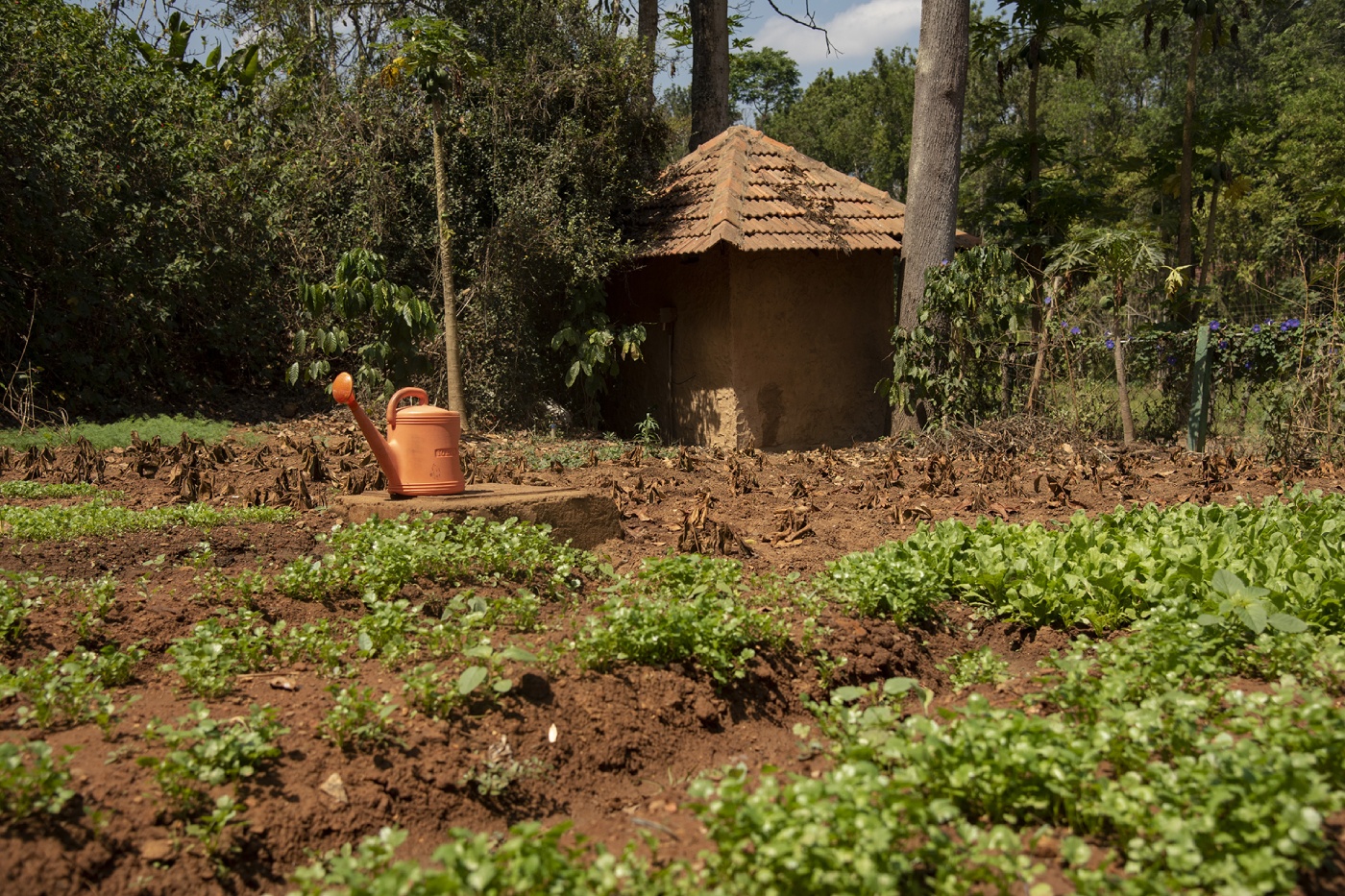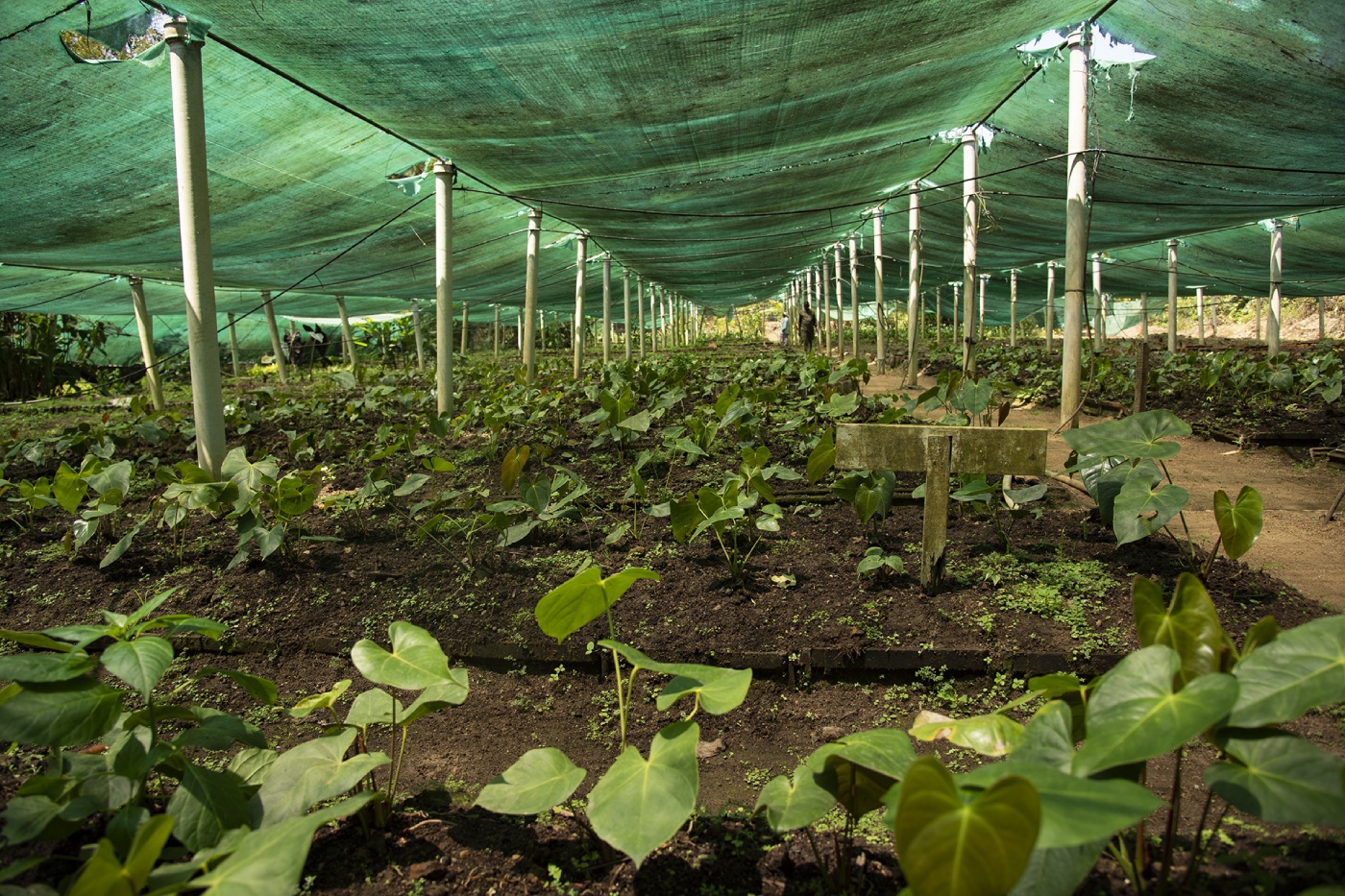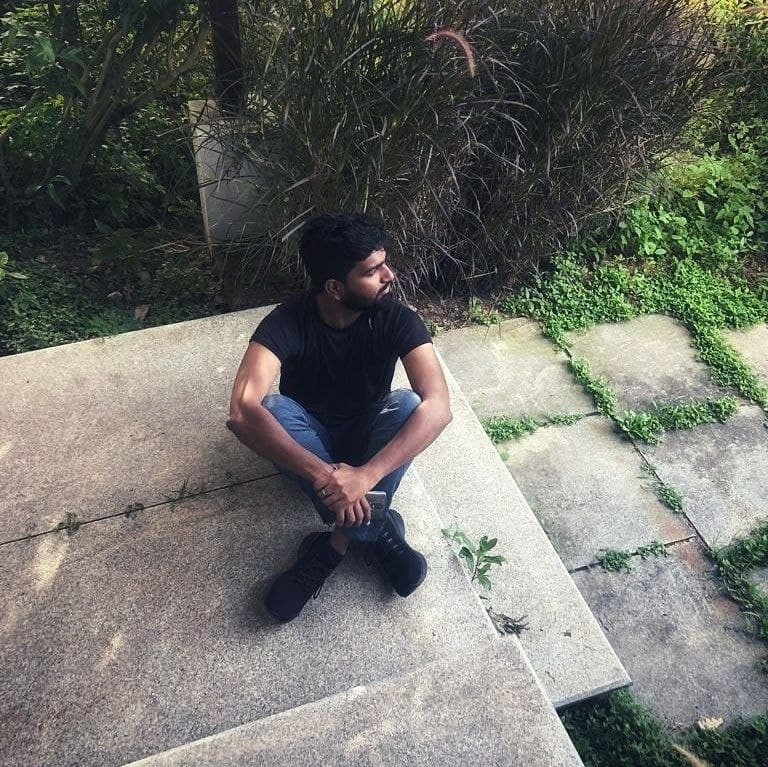In the early twentieth century, working as a ranger in charge of South Canara and Coorg districts, a young Emmanuel Ramapuram fell in love with the abundant nature and unique Kodava culture of Coorg. Alas, a severe attack of malaria saw him return to his hometown of Pala in Kottayam, Kerala and he was not permitted to return to Coorg. But this only made his yearning stronger, and in the year 1926, Mr Ramapuram returned to purchase the Chikkanahalli (small village) estate in Siddapura from Mr Percy Glover Tipping of Consolidated Coffee Estates Ltd.
Close to a century later, the House of Ramapuram has seen four generations of coffee and spice planters. Under the shade of giant Rosewoods and Terminalias, the 300-acre estate produces close to 100 tonnes of robusta coffee and black pepper every year. But today, this blessed land on the banks of the Cauvery river is also a luxury holiday destination, opening its doors for us to step seamlessly into the life of a planter or rather just the laidback bits of it.
Relaxing in the private pool of the Kodava styled villa, the high-pitched cackle of a Malabar Grey Hornbill wakes me from my sated stupor. The clear blue sky above is gently turning a slight shade of the falling dusk. Racket-tailed Drongos make themselves heard now and then, the loud-echoing call reverberating from across the lake. A wagtail curiously skips closer to the pool. The loud clucking of a water hen joins the orchestra.
Never have I felt so close to nature as I have in the last two days at the Chikkanahalli Estate in Coorg. Ancient trees stand mighty at every corner, abodes to Malabar Giant Squirrels and Blue-winged Parakeets; coffee shrubs occupying much of the area under the shade of these giants. The land is replete with water bodies of varying sizes that cater to water birds and other aquatic fauna.. And, amongst this abundance of nature lie these small pockets of absolute anthropogenic luxury, like this temperature-controlled private pool in which I lie spent from the day’s activities.
**
My colleague and I arrived at noon the day before and time has simply flown by. Welcomed with a warm ‘Namaskara!’ and a refreshing coffee mocktail by the courteous staff at the reception, a buggy takes us down the hill, the breeze cool with the distinct aroma of coffee and spices. The sweet music of birds filled the air. The tiny paved path takes us past endless lines of coffee shrubs, individual villas and buildings nestled in the shade of century-old trees, and across a large private lake before the buggy slams its brakes in front of our home to be for the next two nights – the Heritage Pool Villa.
Inspired by the Kodava Ainmane – the ancestral houses of the Kodavas – Heritage Pool Villas at Evolve Back Coorg have been built using the archetypal rust-red, hand-cut laterite bricks that are perfect for the weather conditions in Coorg. Abodes of luxurious seclusion, here you feel at home a little too quickly. These affluent villas boast a separate living room, an en-suite bedroom and two sit-outs along with a private pool and courtyard. Apart from Heritage Pool Villas, spread out in delightful clusters all across the plantation are a ‘Lily Pool’ series of villas, cottages and bungalows. Set amidst a tranquil lily pond, these villas are inspired by the white-washed, mud-walled, thatched houses that are typical of the workers' quarters in plantations.
We freshen up quickly and fancy ourselves another buggy ride, this time to the multi-cuisine restaurant dubbed the Granary. We are hungry and are quick to gorge on the gourmet continental and Indian buffet spread with select Kodava cuisine highlights. Seated on the first floor of the building, an almost bald Persea macrantha tree frames itself beautifully within our window, munias and barbets flitting from branch to branch. The family pool right outside the Granary overlooks the plantation that stretches as far as the eye can see. Having wiped our plates clean, too impatient to wait for a buggy, we start walking back. Complaints about full tummies are quickly forgotten, and we are happy to get lost in the vast estate.
On the walking path beside the Granary, there is a handsome Terminalia bellirica tree with a fresh flush of red leaves. A Flame Vine climber high up on the tree calls attention to itself with its dense clusters of orange tubular flowers. Birds of all colours and sizes chirped and skipped about high up in the canopy and some closer to the ground. If not for the avian aficionado I was tagging along with, I wouldn’t have recognised many of them. We saw Golden Orioles and Yellow-browed Bulbuls, the delicately put-together nest of a Black-naped Monarch, heard the sweet calls of Puff-throated Babblers, and there were Plum-headed and Blue-winged Parakeets feeding on the Silver Oaks which were in bloom all over the estate. Skinks and Calotes sp. rushed back into the undergrowth alerted by our presence.
Pausing and peering at plants, trees, birds and fallen fruits, we finally make it to the huge private lake on either side of which lie clusters of Heritage Pool Villas. Koi and other large fish dart to the surface now and then; large flocks of tiny Indian Silverbills and Black-headed Munias dive and swerve above the water. We make a quick stop at the Peppercorn restaurant, which has an extended platform over the lake from where one can watch the fish.
Back in the villa, a book and a cuppa is perfect company while curling up in the planter’s chairs that populate the sit-out overlooking the lake. The famous Sidapur coffee lives up to its name. It helps that all villas are equipped with Reverse Osmosis (RO) systems that deliver high-quality drinking water on demand. Also, you certainly wouldn’t want to pollute this beautiful land with plastic bottles. Every time I look up from my book, I notice a new visitor in our backyard – Red-whiskered Bulbul, Common Tailorbird, Oriental Magpie Robin, White-browed Wagtail, Purple-rumped Sunbird – the list is truly endless. I pop in for a quick swim in the pool before an early dinner at the Granary. Lazing by the pool with our feet in and a beer can in hand, the starlit sky and the dancing fireflies make the perfect backdrop for life-affirming philosophical musings. We don’t stay up too late.
By seven in the morning, we are at the Activity Centre, ready for the guided birdwatching tour. Lithin is the naturalist on duty. Each of us gets a pair of binoculars, and from the vantage point of the Reading Lounge which overlooks the paddy fields, I get the chance to learn to quickly focus the binoculars where Lithin is asking me to. It takes me a bit of time, but I get the hang of it eventually. The waterbody we are zooming in on has a pair of Indian Pond Herons, a Little Egret and a White-breasted Waterhen – all of them successfully spotted. We then cross the paddy fields and head for the Cauvery river. Exiting the property, we follow a mud path that runs parallel to the long-winding estate fence. Villagers are up and about; school kids rush by on foot and riding cycles. White flowers adorn the mud path, blessed by the Padri trees that are in bloom.
We take a right turn and enter a thick forest, Lithin purposefully leading us forward. I am excited to see my first hornbill in the wild. When he points to the canopy of a Pithraj tree, I first hear the signature hornbill call which trails off into cackles of laughter before I can spot the bird. There is a pair of them, busy feeding on the pale reddish fruit of the Pithraj. Medium-sized grey birds, the prominent casque in most hornbill species is missing in the Malabar Grey Hornbill. They are still fascinating to watch, how they use their bills to pick up a fruit and hold it, almost like chopsticks. The forest floor under the Pithraj tree is littered with fruits and seeds; guess there is a reason hornbills are called the gardeners of our forests. We watch them through the binoculars until the pair fly off in the direction of the estate. Like the Pithraj, much of the forest is in bloom, the Red Silk Cotton tree (Semal), Indian Coral tree, Flame of the Forest (Palash), and the Golden Shower tree (Amaltas) to name a few.
Suddenly the thick canopy disappears into open skies, and we see the mighty Cauvery gently wind her way between small and large rock formations. Antlion pits line the steps that lead down to the river, and I am immediately transported back to my childhood when I used to catch ants and drop them in the pits – patiently waiting to serenade the gladiator ants that would make it out alive. Quite cruel, I realise now. An overcrowded boat makes its way downstream, a few coracles are also visible. If you fancy a ride in these circular fishing rafts, the resort can arrange it for you. In fact, there are a myriad of other activities which will take you to the surrounding villages and the Bylakuppe Tibetan settlement nearby.
A quick breakfast at the Granary, and we are ready for the Responsible Tourism (RT) trail, a guided tour around the estate introducing us to the various RT initiatives. There is a genuine effort to reduce wastage and reuse and recycle at the estate. A state-of-the-art Sewage Treatment Plant recycles all of the wastewater produced and is used in gardens and other public areas. Waste management is done in an optimal and responsible manner, with an emphasis on quantification, enabling them to raise the bar continuously in terms of waste output. Novel innovations are attempted on a regular basis, our guide Srinivas shows us an imported piece of machinery which traps oil and grease from the kitchen wastewater. The kitchen wet waste is used to feed a biogas plant which in turn provides fuel for the staff kitchen.
There is a healthy amount of local community involvement and development at Evolve Back. Srinivas tells us that more than 60% of the staff is made up of local youth. The estate has also adopted a local school nearby under the School Nurturing Programme of the Karnataka Government. Last year, in partnership with the Building Blocks educational foundation, Evolve Back opened a novel pre-school for the children of plantation workers, tribal workers and the underprivileged. Local artisans are also supported with their work finding a place among the in-house produce of coffee, spices and preserves at Haystack (souvenir shop).
On our way back from visiting the Sidapur Coffee and Culture Museum, housed in what was originally an old smokehouse (the result of an experiment with growing rubber on the estate), we spot some activity in the canopy. A Malabar Giant Squirrel suddenly pops out of nowhere. We are rooted in our spot, but there is a fair amount of human activity around. Without a care in the world, the rusty, reddish-maroon and cream coloured chubby ball of fur climbs down to the ground, swishing its giant tail, literally three feet away. The almost flashy iridescence is supposedly camouflage, but I just can’t take my eyes off the gorgeous animal. After snapping about a hundred images and wishing I get to befriend one in my lifetime, we head back to the villa.
**
Flocks of Cattle Egrets and Night Herons fly past; dusk has fallen at last. The patch of bamboo by the pool, overhanging the lake is suddenly host to a cacophony of Jungle and Common Mynas. Unlike a Bangalore pub from which discord overflows into the street all night, this noisy bunch seems to take very self-aware breaks. But the mynas are persuasive enough to drive me out of the pool and in for a shower.
The estate takes on a very different aura after dusk, dim lights guiding us along narrow paths, the campfire on the deck of the Peppercorn restaurant shining bright in the night. We head for the Plantain Leaf restaurant for our last meal at the resort. The restaurant serves authentic South Indian and North Indian buffets, on a plantain leaf, of course. Set amidst rows and rows of coffee, the path leading up to the restaurant comes under fire from the far-reaching sprinkler that works all through the night to maintain the perfect climate for coffee to grow. We time our run, pausing before the next dash, and successfully make it with less than a sprinkle of water in our hair. The meal is glorious, a fitting farewell to two days of living in a plantation, luxuriously yes, but never intrusively so – always preserving the natural balance of man and his environment.
